







SUMMER 2023 | 1 Greener. Smarter. Stronger. Keeping Georgia’s green industry informed SUMMER 2023 URBAN AG GEORGIA COUNCIL MAGAZINE IS BACK FOR 2024! Details starting on page 7 16 36 48 50 40







SUMMER 2023 | 3 Farm Fresh Sod • ngturf.com • 770-431-1347 PARTNERS YOUR PREMIUM SOD Our Certified Turfgrass Professionals are ready with sod solutions for every job. CONVENIENT DELIVERY INCLUDING MONDAY AM CUT TO ORDER & HARVESTED FRESH DAILY! Visit NGTURF.COM Our Pro Online Store available 24/7. Call 770-431-1343 for more Farm, Fresh Sod information *See Website for Details MULTIPLE VARIETIES INCLUDING: FESCUE
Board of Directors
Pam Dooley
Plants Creative Landscapes
Jennifer Jorge
King Green
Matt Lowe
Swift Straw
Josh Morrow
Athletic Fields, Inc.
Ken Morrow
The Turfgrass Group
Bob Scott
Irrigation Consultant Services

Steve Ware
Centennial Olympic Park/GWCC
Ray Wiedman
Outdoor Expressions
Ron White TurfPride
Ex Officio
Bodie Pennisi
UGA Extension Horticulturist
Clint Waltz
UGA Extension Turf Agronomist
Staff
Mary Kay Woodworth
Executive Director
Kathy Johnson
Marketing Director & Editor
A member of:
Georgia
RISE
PO Box 3400 | Duluth GA 30096 Phone: 706.750.0350
Fax: 404.900.9194
Email: office@georgiauac.com
Web: urbanagcouncil.com
4 | UAC MAGAZINE
Magazine Official publication of the Georgia Urban Agriculture Council
UAC
American Hort Atlanta Botanical Garden
Federation of Employers & Workers of America
Georgia Arborist Association
of Water Professionals
Georgia Association
Council
Georgia Tree
Water Alliance
Landscape Professionals
Consumer Horticulture
Landscape Association Executives
(Responsible Industry for a Sound Environment)
National Association of
National Initiative for
Nursery &
Alliance
Seasonal Employment
Partners
Urban Ag Council
Tolar Capitol
Georgia
URBAN AG GEORGIA COUNCIL MAGAZINE UAC NEWS 5 Executive Director message 6 What did you miss? UAC networking dinner at Topiary Courtyard 7 GALA is back for 2024 Researched, revamped and you don’t want to miss it REGULAR FEATURES 14 Have you met... Rex Hayes, Climate LLC 16 Pest 411 Watch out for Thrips parvispinus in Georgia 18 Save the date 20 Health & benefits How to know if you’re a candidate for self-funding 22 What the tech? What is a CTA and why do I need it on my website? 24 Safety works Biting, stinging hazards of summer 58 Directory of advertisers BUSINESS 26 (Relative) calm after the storm Making the most of downtime 28 Your CPA’s background Why working with an expert in your field matters 30 Leading your team Solving the accountability problem 32 Planning your marketing budget Budget with the end in mind 36 Smart moves Smart irrigation controllers focusing on advancement INDUSTRY 40 2023 legislative session Key policies for urban ag passed 43 Capitol Connection UAC member survey results 44 Investing in tomorrow Growing job education grows job opportunities 46 Tree industry licensure Legislation would bring standards and enforcement URBAN AG 48 The simple truth of integrity Certification protects more than just grass 50 Dazzling display in the shade 20 best hosta companion plants 54 Turf areas reimagined Picking your pockets for a large front yard 56 Planting for pollinators 2023 Georgia Pollinator Plants of the Year
All contents copyright 2023 SUMMER 2023
Dear UAC Members and Supporters,
Happy July...2023 is flying by!
I hope that you are managing the challenges in front of you daily – labor, traffic, weather - and having a profitable year. At least there’s one thing we don’t have to worry about this summer: drought! Abundant rainfall is a blessing and we hope that it continues throughout 2023, as it seems the old Georgia late afternoon thunderstorms have returned.
LEAF Act
Many thanks to all the UAC members who offered their support and encouragement as we advocated for the rights of our members and citizens of Georgia to use gaspowered landscape equipment.
As we observed that Washington, DC and a long list of cities across the country have banned or are considering banning these tools from landscapers and homeowners, we consulted with our membership and with the National Association of Landscape Professionals (NALP) on the topic.
It was clear that our members recognize that gaspowered, battery-operated, and manual tools for managing landscape debris, construction sites, and pest control all have benefits to consumers, but that an outright ban on gas-powered equipment was economically and logistically unfeasible.
We sprang into action (initially in 2022 and completing the job in 2023) to have a law on the books that protected the freedom of citizens and businesses to use the tools that best fit their needs.
In May 2023, Georgia House Bill 374 (including the Landscape Equipment Agricultural Fairness “LEAF” Act) was signed into law.
4 4 4
Georgia is now the first state in the US to prevent local governments from banning the use of gaspowered leaf blowers.
Governor Kemp nailed it when he said this bill “is about choice and freedom.”
Why is this important? It helps your employees operate efficiently, productively and profitably and provides a stable, consistent environment as they work around the state of Georgia.
4
UAC will continue to advocate for all your businesses – and this legislative win is one of the many ways we do that!
Workforce development
Workforce development is still at the top of our list of challenges and - although it’s no solace - this is true across every industry. UAC continues to address this and look for opportunities to elevate the industry’s perception in the public eye to attract and develop a workforce that thrives and grows.
We recently joined a group of ag-related industries to discuss the growth of careers and jobs in STEM (science, technology, engineering, and math) related fields and guess what? We are not just talking about white-collar jobs – we are talking about a diverse array of jobs in diverse industries.
Georgia’s STEM employment is growing year after year, and this can help the landscape, turfgrass and horticulture industries moving forward, as we promote this to the public, policy makers and your future employees! See page 44 for data on this STEM employment growth and how you can learn more in a recently published report.
Summer and fall events
Finally, we hope to see you at upcoming UAC events, starting in August at Chattahoochee Tech and continuing into the fall with NG Turf’s Pro Day, UAC’s sporting clays tournament and our Sod Producers + Landscape Field Day. Landscape Pro University will be back in the winter so watch for those details. A current listing of events is included on page 18. As always, the UAC website will be updated as more events are added: urbanagcouncil.com.
Have a wonderful summer and keep safe!
Mary Kay Woodworth | Executive Director


SUMMER 2023 | 5 UAC NEWS




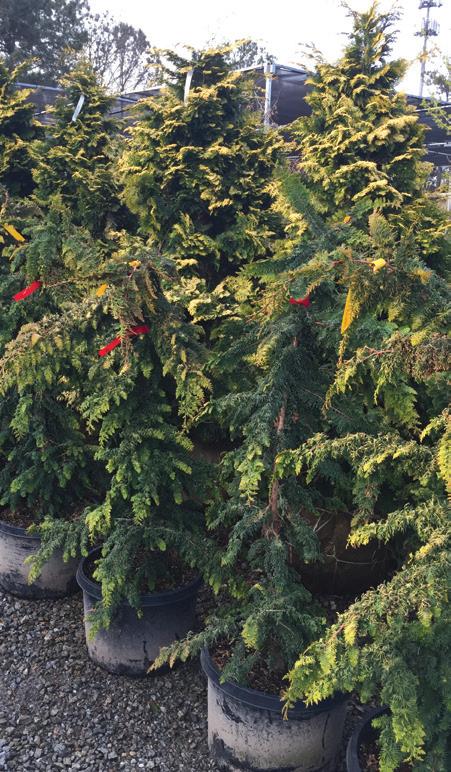
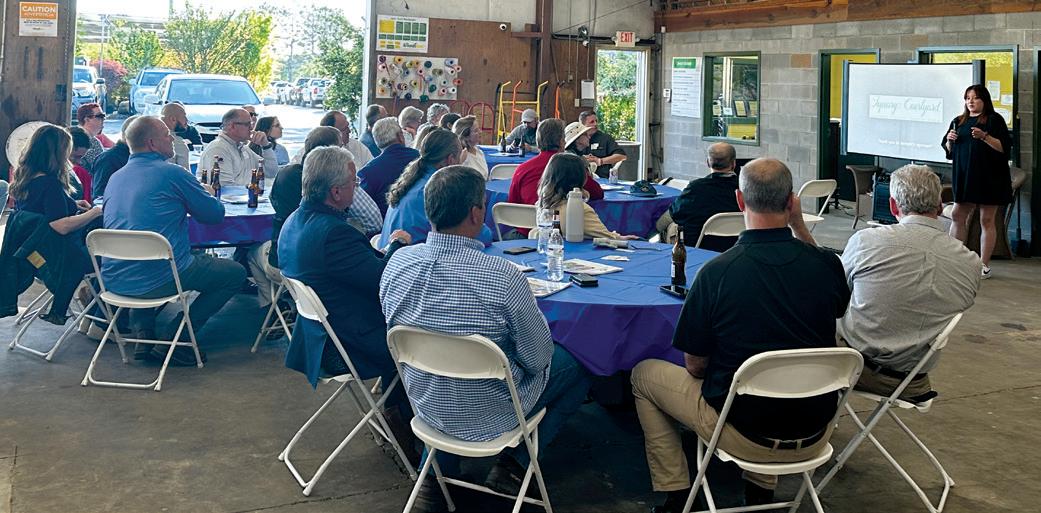

6 | UAC MAGAZINE UAC NEWS WHAT DID YOU MISS? UAC Networking Dinner | April 11 | Topiary Courtyard | Peachtree Corners GA
The tradition started with the Metro Atlanta Landscape and Turf Association, then continued with the Georgia Urban Ag Council. For nearly 30 years, we have celebrated the excellence of our members by showcasing their projects.



The celebration continues.
Entry deadline: January 5 | Judging: Early February |
Notification: Mid February |
Ceremony: Mid March
SUMMER 2023 | 7
2024
Unique Environmental Landscapes Grand + Judges’ Choice Awards
Researched. Revamped. Relaunched.
We reviewed and interviewed and surveyed UAC members and other awards programs from coast to coast, then we took the best features and combined them with the GALA features our members love. Here’s what’s new:
More exposure
Radio and social media. GALA winners will be featured on WSB radio’s Green and Growing with Ashley Frasca in Spring 2024 and through the show’s social media.
Email and blog posts. The GALA awards section of UAC’s website will be used as a landing page for email blasts, directing people to blog posts with photographs and project descriptions created for Gold and Silver winners.
Press coverage. The Georgia Urban Ag Council will promote the GALA awards through press releases to the local and trade press.
More awards
Newcomer of the Year award, for members who joined UAC in 2020 or later. Supplier of the Year award, nominated by UAC members to recognize superior service from their suppliers.
MVP award, nominated by UAC members to recognize a team member who goes above and beyond to help the company reach their goals.
Environmental Awareness award, for UAC members who focus on sustainability by restoring, reclaiming or creating a landscape with similar functions and values of a native landscape.

8 | UAC MAGAZINE
Floralis Garden Design Grand Award
More resources
Mentors for first-time entrants. Reach out to designated award-winning UAC members and get their feedback BEFORE you submit your entry.
Learn from past awards. View past projects, including the judges’ comments, on UAC’s website. Put your best foot forward. We’ll supply a list of photographers who have experience working with landscape projects to help you tell your story.

Smoothing the path to success
Simplified categories and judging criteria. Fewer categories, wider dollar ranges and a point system to determine awards.
Interiorscapes. Now you can submit your residential and commercial projects that focus on interior landscapes.
Photo retouching. Go ahead, edit your photos to make slight corrections - just provide the original of the photo so we can see what corrections were made.
No need to upload the contract signature page. Just fill in the dollar amount of the contract on the application.
We’re here to keep you motivated. Opt in to awards coaching and you’ll get periodic updates, prompts, and tips to keep you on track with your awards submission.
SUMMER 2023 | 9
Chatham Landscape Services Grand + Judges’ Choice Awards
Why enter?
GALA is for all kinds and sizes of projects
Projects from under $25k to over $500k
Interior & exterior
Design/build/installation
Landscape management
Seasonal color/containers
Landscape lighting

Environmental awareness
Community stewardship
GALA is for your company and your team
The best marketing dollars you will spend
Use the project photos for all your marketing efforts
Get the additional exposure from UAC’s promotion of the awards
Learn from the judges’ comments to build a stronger company
Gain credibility and visibility in the industry
Reward your team for their hard work
Attract the kinds of employees you want to recruit
“We got a residential design/ build project - over $60,000and we did nothing to get it, it was a completely passive sale. It all happened because of our involvement in the awards, because our projects and their photos were out there. When you can create sales without effort, that’s huge.”
~ Todd Guilmette Unique Environmental Landscapes
The best people want to work for the best companies and the best companies win awards. Get recognized. Get rewarded. Enter the awards.
10 | UAC MAGAZINE
Southern Trillium Distinction Award
Classic Landscapes Distinction Award

Awards
Entry submission does not guarantee an award.
Gold For projects judged as greatly exceeding all criteria for the category
Silver For projects judged as superior in their overall evaluation
Bronze For projects that meet the standard in the category
Judges’ Choice Special designation that may be given, at the sole discretion of the judges
Newcomer of the Year For members who joined UAC in 2020 or later, a special award that may be given, at the sole discretion of the judges
Environmental For UAC members who focus on sustainability by restoring, reclaiming or Awareness creating a landscape with similar functions and values of a native landscape, a special award that may be given, at the sole discretion of the judges
Categories
Residential & Commercial
Design/build/installation
Landscape management
Seasonal color (includes container designs)
Landscape lighting
Community stewardship
Dollar breakdowns within the category:
1. Under $25,000
2. $25,000 - $100,000
3. $100,000 - $250,000
4. $250,000 - $500,000
5. Over $500,000
SUMMER 2023 | 11
Judging procedures
1. Entries do not compete against each other; they are evaluated using the judging criteria.
2. Judges may designate multiple entries to receive awards within any category.
3. All entries are judged without knowledge of who entered the project.

4. A panel of professionals representing various aspects of the industry evaluate the entries.
5. All judges’ decisions are final.
How to enter
Step 1: Read the complete entry details for your category.
Step 2: Download the worksheet for your category.
Step 3: Gather your photographs.
Step 4: Use the information from your completed worksheet to complete the online entry form, then upload your photos and the required documents.
Step 5: Pay entry fee of $150/entry. Be sure to enter by January 5, 2024 to avoid the late fee!
Step 6: Submit your entry and you’re done!
Timeline & fees
Deadline for entries
5:00 pm | Friday, January 5, 2024
Late entry deadline (late fee will apply)
5:00 pm | Friday, January 12, 2024
Judging of entries
Early February 2024
Notification of awards
Mid February 2024
Awards banquet & ceremony
Mid March 2024
Entry fee
$150 per entry
$50 late fee for entries after 1/5/24
Current UAC members only.
12 | UAC MAGAZINE
Ruppert Landscape Grand Award
Questions?
Need help with any part of the application process?
We’re here to help! Contact us: 706.750.0350 or kathy@georgiauac.com
Learn more at urbanagcouncil.com/gala-georgia-landscape-awards
Past award winners
Rules of entry
Judging criteria for all categories
Photo criteria and tips
Success tips
Worksheets
Online application
Want to make a nomination?
If you would like to nominate another UAC member for the MVP or the Supplier of the Year award, visit our website to complete the online form: urbanagcouncil.com/gala-georgia-landscape-awards

SUMMER 2023 | 13
Flowerworx Distinction Award
Have you met...
Rex Hayes, Climate LLC

Storage tanks, rainwater and stormwater harvesting, MyECOBarrel™, fabrication
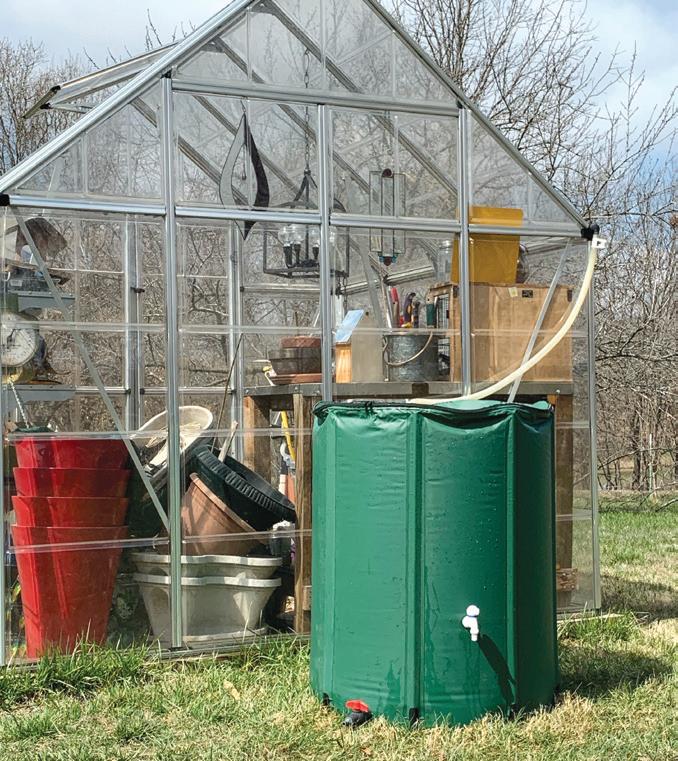

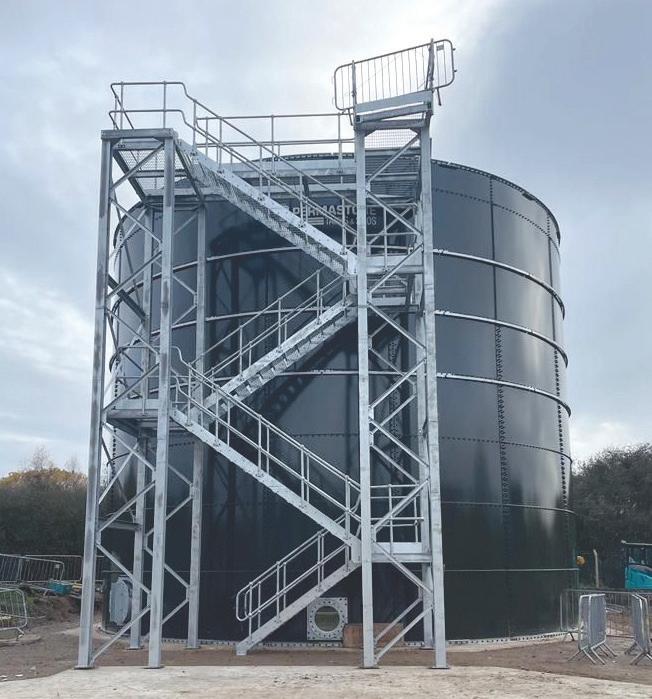
My first job in the green industry was...Climate LLC, beginning in 1996.
My biggest challenge in my career has been… converting from a consultant to a manufacturer.
The people who have most influenced my career are…..my team and my family.
My biggest career success so far has been….. breaking the barrier of 100m gallons of rainwater harvested in a single year.
If I had it to do over again, I would…..start manufacturing sooner in my career.
The thing I like most about my career is…..the global reach of influence.
My least favorite part of my job is…not enough time. One piece of advice I would give to someone entering the green industry today is…be prepared to listen, take notes, and be present.

The one thing most responsible for my success is…the Lord’s influence.
If I could change careers, just for a month, I would… not want to.
One thing that really annoys me is…reaction without facts.
When I’m not working, I like to…design and landscape. One thing most people don’t know about me is…my degree is in global economics and not engineering.
Contact info:
Address: 154 Pearl Industrial Ave., Hoschton, GA 30548
Phone: 678-849-3914
Email: Rex.Climate@gmail.com
Web: www.ClimateIncorp.com
www.ClimateTanks.com
www.MyECOBarrel.com www.HalcyonTankAssembly.com
14 | UAC MAGAZINE
HAVE YOU MET

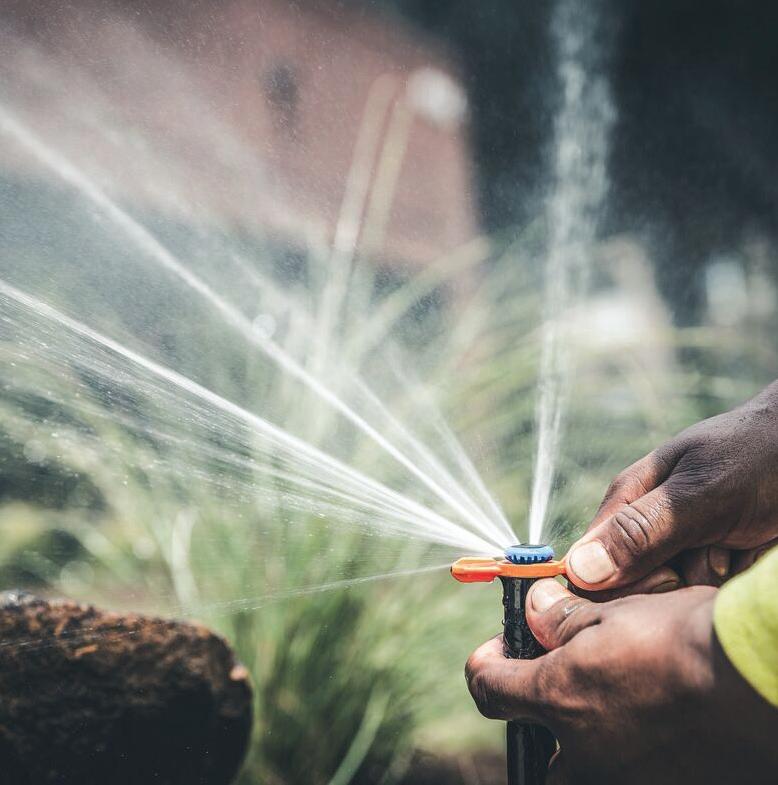



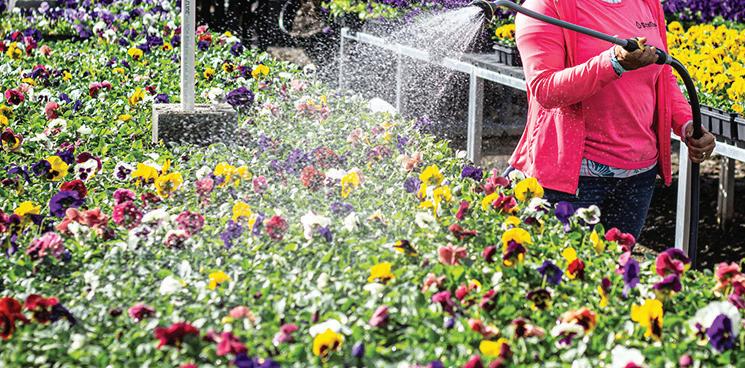










SUMMER 2023 | 15 Golf Course Maintenance | Turf & Landscape Maintenance | Pest Management | Lighting | Nursery | Hardscape | Irrigation Scan to find a branch near you. Or visit SiteOne.com/locations EXPERT ADVICE THE PROS OF BEING A PRO
There is a new thrips in town
Watch out for Thrips
parvispinus
in Georgia
by Shimat V. Joseph, Associate Professor, University of Georgia Department of Entomology
Distribution
Thrips parvispinus is an invasive thrips species recently reported in Georgia (Fig. 1). It is widespread in Florida. In 2020, it was first reported and identified in the continental US from Florida. Previously, it was reported from Hawaii. It is native to Asia (such as China, India, Indonesia, Japan, Malaysia, and the Philippines) and is currently reported from 17 countries in Africa, Australia/ Oceania, Europe, and North America.
Description
4 4 4 4
Thrips parvispinus is roughly half the length (~1 mm long) of common thrips (such as chilli thrips or western flower thrips).
The body of this thrips is dark-colored. The head and thorax are brown colored and the abdomen is a uniform black color (Fig. 2).
The wings follow a similar shift in color, with the base (over the thorax) brown and the portion over the abdomen dark. Wings are elongated and narrowshaped. The margins of the wings are fringed. They jump and fly using their fringed wings and disperse short distances.
The mouth parts of thrips have stylets and a mandible which are used to punch the tissue and suck the cell contents.

Biology and lifecycle
Under greenhouse conditions, this thrips species takes about 14 days from eggs to adults on pepper (Fig. 3).
The eggs are inserted into the plant tissue, mainly on bracts by the females. A female lay about 15 eggs. In about five days, the eggs hatch, and the larvae go through two larval stages, which take about five days. The larvae pupate in the soil and emerge within three days.

Females live about nine days, whereas males live for about six days.
Thrips hide under the cracks and crevices of the plants, such as rolled leaves, etc.
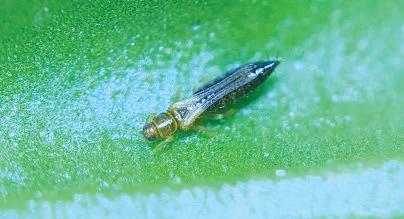
16 | UAC MAGAZINE PEST 411
Fig. 1. Adult Thrips parvispinus.
Photo source: https://www.thrips-id.com/en/thrips-parvispinus
Fig. 2. Thrips parvispinus on pepper leaf.
Fig. 3. Adult Thrips parvispinus on pepper leaf.
Photo source: Shimat Joseph, University of Georgia
Photo source: Anna Mészáros, Commercial Vegetable Extension Agent, University of Florida / IFAS Extension Palm Beach County
Host plants
As a polyphagous insect pest, it can feed on about 43 plant species from 19 families, which includes different crop types, including ornamental plants, fruits, and vegetables. It is reported as a pest on ornamentals, solanaceous vegetables, and papaya. On ornamentals, they are found on gardenia (Gardenia jasminoides), hibiscus, pinwheel jasmine (Tabernaemontana divaricata), Dapladenia, etc. These plants are sold in box stores in Georgia.
Damage
Both adults and larvae of thrips feed on the leaf and flower tissue (Fig. 4). As more feeding occurs, a lightcolored spot appears on the surface, gradually turning brown (Fig. 5). The feeding damage on the leaves and fruit produced silver scars (Fig. 6).

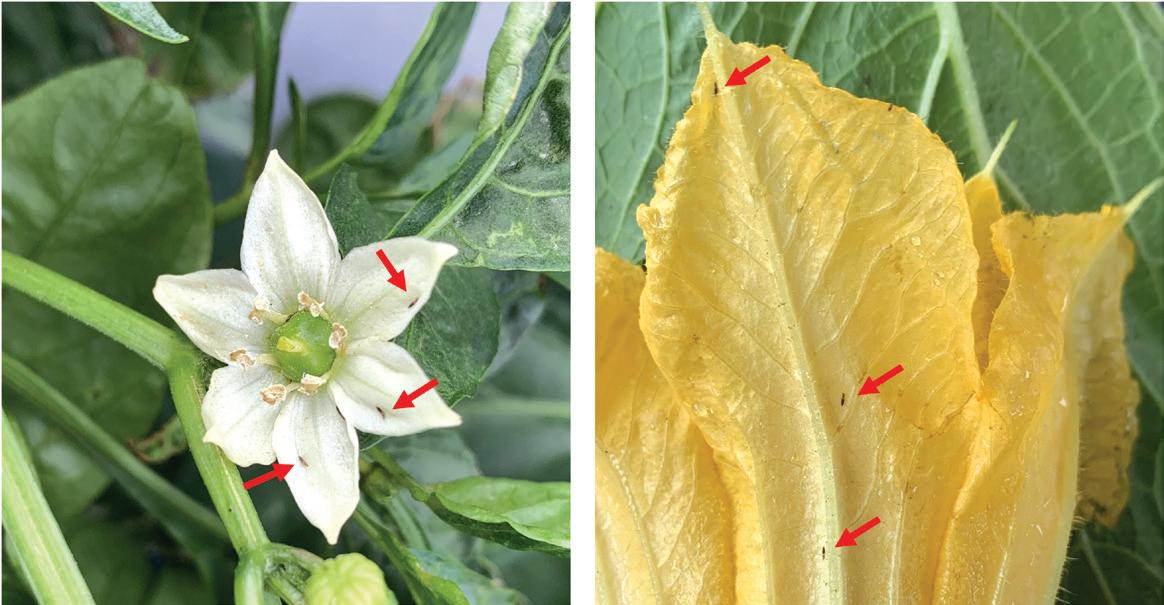
They feed on all areas of leaves and fruits. The feeding damage in the early stages of leaf or fruit development later appears distorted or twisted-shaped, resembling viral infection. There are no reports of any viruses transmitted by this thrips species.
This damage to ornamentals can affect the aesthetic appeal and salability. On agronomic crops, it can reduce crop yield.

Monitoring and management
Generally, thrips are monitored by beating the plants onto a white paper attached to a clipboard. These thrips are small but will be visible to the naked eye. The biological control strategy in the enclosed structure was successfully implemented against thrips. Minute pirate bugs and predaceous mites and lacewings are commonly used. In general, the products of active ingredients, such as acephate, spinosad, sulfoxaflor + spinetoram, tolfenpyrad and cyantraniliprole, are effective on thrips. Please carefully read the insecticide product label before making an application; the insecticide label is the law.
The
UAC business-level members can select the auto-recurring payment option for their annual membership investment and get an immediate 5% discount.
The auto-recurring payment option is available for credit card payments only. Your credit card automatically will be charged on your annual renewal date.
It's easy: First, go to urbanagcouncil.com > Choose the Membership menu, then Member Login. NOTE: Only the primary contact for your company will be able to manage/renew the company's membership. Contact us via phone or email if you need help with logging in.
Even easier: Contact us and we'll do it for you! Call 706.750.0350 or email office@georgiauac.com
SUMMER 2023 | 17 PEST 411
Fig. 4. Thrips parvispinus adult female on pepper flower and squash leaf (red arrows).
Fig. 5. Thrips parvispinus feeding damage on gardenia (red arrow).
Fig. 6. Thrips parvispinus damage on pepper plant and fruit.
Photo source: Anna Mészáros, Commercial Vegetable Extension Agent, University of Florida / IFAS Extension Palm Beach County
easiest 5% you'll ever save. Sign up for auto-renew now!
Peek into the future of your industry Student meet & greet and dinner
DATE: Tuesday, August 29
PLACE: Chattahoochee Tech
980 S Cobb Drive SE, Marietta GA 30060

Horticulture director John Hatfield will discuss the hort program, industry involvement and tour the grounds!

Interested in having a “career day” table at this event? Contact us for information! office@georgiauac.com
DATE: Thursday, October 5
PLACE: NG Turf | Douglasville GA
Landscape supply, ornamental and tree, equipment, technology, irrigation, business consultant supplier “Pro Day” tradeshow, dinner and speakers: Brian Schwartz, UGA; Billy Skaggs, Georgia Crop Improvement Association; and Dr. Ben Campbell, UGA.


UAC Sporting Clays Tournament

Blast your troubles away | Win prizes | Eat BBQ
DATE: Thursday, October 26
TIME: 9:00 am - 1:00 pm
PLACE: Blalock Lakes
4075 New Corinth Road | Newnan GA 30263
Register as a team or an individual! Additional sponsorships available!
UAC Sod Producers + Landscape Field Day

Annual event sponsor Ball cap sponsor

DATES: Monday, November 6: Attendee/exhibitor reception

Tuesday, November 7: Field day
PLACE: Super-Sod | Fort Valley GA
Landscape Pro University



Coming this winter!
Watch for details!
18 | UAC MAGAZINE Visit urbanagcouncil.com for updates and to register. SAVE THE DATE
LANDSCAPE PRO U N I V E R S I T Y AUG 29
OCT 26 OCT 5
NOV 6-7


WWW.PROGRESSIVETURFEQUIP.COM 800.668.8873 Quality built in North America and supported by a world-wide Dealer network. NEW REVOLUTIONARY INTRODUCING OUR TOOL FOR WIDE AREA MOWING
Health plan alternatives
How to know if you’re a candidate for self-funding
by Tara Byrd, CIC, Employee Benefits Consultant, Snellings Walters Insurance Agency
Finding a health plan that is suitable for your business and employees is tough. Looking at all your options, including alternative options, is a good way to see what works for your business and what does not. There are many alternatives, such as self-funding, that might be a great fit for your future health plan route.
Self-funded health plans are when the employer takes on the financial risk of providing health benefits to their employees. Self-funded plans can be a cost-effective option for some employers, but it’s important to carefully consider whether this is right for your business.
Considering making the switch to self-funded health plans, but don’t know if you are the right candidate? Below are a few indicators to see if you qualify for selffunding.
4 4
Your company has more than 50 employees. In the past, self-funding was only an option for big companies. However, that is not accurate anymore and there are many programs out there with self-funded plans. Many carriers have created a model where the scalability to go self-funded doesn’t have to be thousands and thousands of employees anymore. So, if your company has 50 or more employees, it’s actually a great opportunity to evaluate to see if it’s a good fit for you.
You want increased control over risk. The term “selffunded” can sound intimidating. However, the truth is you do have reinsurance behind the scenes to protect you from any catastrophic claims. While fully-insured groups transfer risk entirely to a carrier, they miss opportunities
for significant savings. With self-funded plans, instead of simply transferring risk, employers are proactively managing it.
4
You want to create a health plan that works best for your company. Due to the nature of how self-funded plans are designed, employers can create health solutions that work best for their employees. This reduces overall claims expenses, and they can also choose providers, become part of a proprietary network, and put their employees in a position to make smarter consumer choices. Self-funded plans allow you to have better control over your plan and your costs.
Learn more
Want to find out if you are a potential candidate for selffunding? Use this code to visit our website now to take a short questionnaire.

Let’s talk. I’m happy to answer any questions you have about self-funding.
About the author
Tara Byrd, CIC, is an Employee Benefits Consultant with Snellings Walters.

E: tbyrd@snellingswalters.com
P: 770-268-3688
W: snellingswalters.com
Planning to renew your membership online?
Did you know that only your company's primary contact can make this transaction?
As a business-level member, your employees also are members of UAC. If you have employees who would like to be added to our system as additional contacts, just let us know. Those additional contacts will be able to log in as a member, edit their contact details, view member-only content and register for events at the member rate. However, they will not be able to edit or renew the company membership unless they use the email and password of the primary contact.
Need help with login? Call 706.750.0350 or email office@georgiauac.com.
20 | UAC MAGAZINE HEALTH & BENEFITS


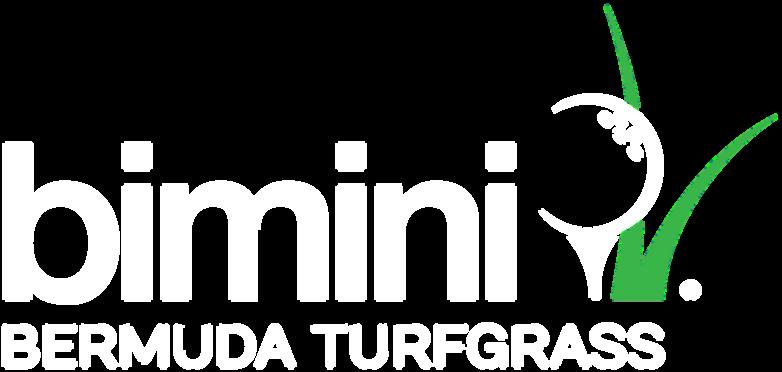


SUMMER 2023 | 21 229-931-0500 www.sumtersod.com
Call to Action
What is a CTA and why do I need it on my website?
by Aleceeya Thill for Manta
Why do CTAs matter?
Calls to Action activate your sales funnels and they start people on the journey to learn more and to eventually become customers.

CTAs are incredibly important because they keep people on your website longer. They encourage people to learn more about your business and possibly turn it into a sale. Those who spend time on a website found organically through a search engine convert into a sale eight times higher than by other marketing means.
In the marketing world, the term CTA is common and known. We hear and use it all the time. Trying to maximize its effectiveness with tests can be constant, but what is this crucial bit of marketing jargon that you need to implement on your website?
Having an effective CTA that’s worded well and marketed to help assist a consumer in making a decision or directing them to another resource can be extremely beneficial to your business. In this article, we will discuss what a CTA is, why they matter, where to place them, and how to make them effective. Let’s get started!
What is a CTA?
CTA stands for Call to Action. It means a conversion on your website. All those buttons that say “learn more” or “contact us” or “buy now” help encourage customers to perform a certain action.
Any other number of quick little links require the reader to take an action. They need to click on them to be directed to the next page or resource to learn additional information. A CTA can take many forms such as:
Text hyperlink
Button
Plain text with no link
Essentially, it’s all the language on your website that invites someone to take action further.
So it’s important to optimize your website with CTAs to ensure people stay longer once they land on the page.
Additionally, customers actually expect a CTA on your website. Learning about a user’s intent can be the most effective way to make your CTAs successful.
For example, if they like your product, they want to learn more about how to buy it and most likely have a commercial intent. You need an informative and transactional CTA that makes it easy for them to take that action.
If you want people to learn more about your company with an informational intent, you need an “About Us” section that’s easy to find.
Essentially, your conversions, business, and revenue stream can all depend on the CTAs you have on your website, along with matching your CTAs with the right user intent.
Where do I put a CTA on my website?
You’ll see CTAs in various places on a website. It can be in banner and sidebar ads, blog posts - you name it! You see them throughout product pages and on the homepage of a website including where you can click through and learn more on additional pages.
Most importantly, you need to make your CTA easy to find. Users come to your site and expect to find contact information at the bottom and different menus at the top. You need to have CTAs sprinkled throughout your website in places where a potential customer could look and instantly know what they need to do.
22 | UAC MAGAZINE WHAT THE TECH?
Image by Vicki Hamilton from Pixabay
4 4 4 4 4
There’s no one right place to put a CTA on your website, but you absolutely need them. At the end of a blog post, you could link them to a product that you talked about. Or you could link to another blog to learn more about a particular subject. You need to include language like “to learn more about [website content] and why it matters, click here,” and then link to that additional blog post.
That’s just one example, but there are dozens of places for CTAs. You need them next to your products, to get people to visit your blog, and you can experiment with different locations to see what converts the best.
You can also put CTAs onto your social media posts that encourage people to visit your website. In fact, much of your social media posts should be encouraging people to take additional action. When you’re talking about new products or services you should always point them back to your website where they can learn more.
Hopefully that gives you a starting point and helps you think of different places to include CTAs on your website. There’s no wrong way to implement a CTA, just be sure to use them so people will take action and stay on your site longer. These could be the final pieces that make all the difference for more sales and conversions exclusively off your website.
About the author
Aleceeya Thill is a Business Analyst at Manta. She has a AS in Communications and a BS in Food Science and Nutrition. Aleceeya has experience in freelance editing and digital marketing. She is an aspiring published author with a love of science, reading, cooking, and loving her dog and three-legged cat. By day she’s a Business Analyst and by night she works at a mortuary and library.
About Manta

How do I make my CTA effective?
If you’re still not quite sure what kinds of CTAs to include on your website, consider some of these examples:
4 4
Buy Now
Add to Cart or Wishlist
Learn More
Details
Read More
Try Now
Subscribe
Help / Chat Now (with a chatbot feature)

Sign up today
Download template now

Learn more today
Schedule a free consultation
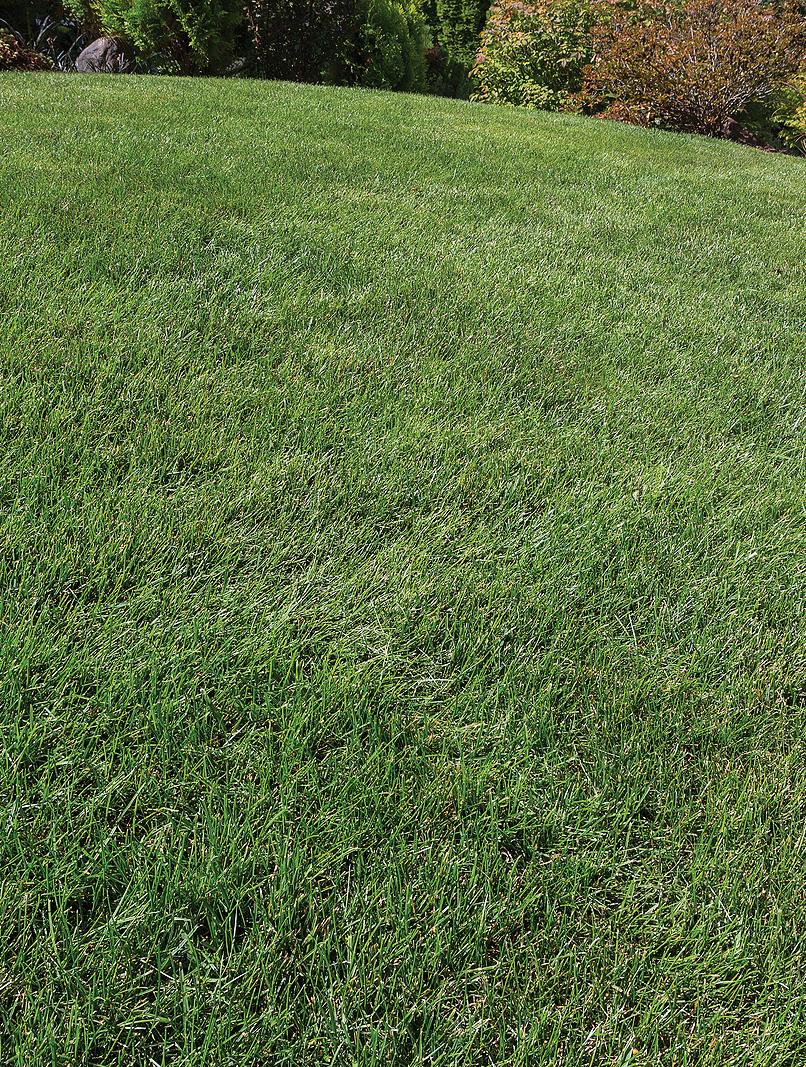
Register for the free webinar
Manta is one of the largest online resources dedicated to small business. We deliver products, services and educational opportunities that are effective, easy to understand and geared to help business owners become more competitive in their respective industries. Learn more at manta.com/resources 4 4 4 4 4 4 4 4 4 4 4 4
Share or Follow us on Instagram/Twitter/LinkedIn/ Facebook
Once you place your CTAs, make sure the links to additional pages actually work and don’t lead you to an irrelevant page or even worse, a missing page that will show a 404 error. Then on the page you link to, you also need to make sure your copy and goals for the page are obvious. If your CTA is a “Buy Now” button, it needs to take you to a shopping cart feature. If you’re linking to another blog, you need to hook them in with good content right off the top.
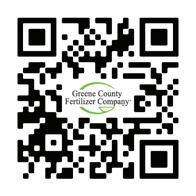
SUMMER 2023 | 23 WHAT THE TECH?
GreeneCountyFert.com BUY/SHIP DIRECT LOCAL PICK-UP Corp. HQ/MFR: Greene County Fertilizer Company 1490 Airport Rd., Greensboro, GA 30642 MINOR ELEMENTS, MAJOR RESULTS. Healthy turf starts with Greene County Fert. Keep the lawns green, dark green, and your soil and lawns healthy this year with Greene County’s N-Ext lineup and find some stability and predictability. GROW YOUR BUSINESS, WE’LL GROW YOUR TURF.
Biting, stinging hazards of summer ID, prevention and first aid tips

Poison Ivy and Poison Oak
> Woody, rope-like vine, a trailing shrub on the ground or a free-standing shrub.
> Normally, three leaflets, but may vary from groups of three to nine. “Leaves of Three, Let it Be”
> Leaves are green in the summer and red in the fall.
> Oil can remain active for months on objects.
> Found mostly in moist, deciduous forest and wooded areas. Also found on trees, fences, and ornamental plants in landscaping.
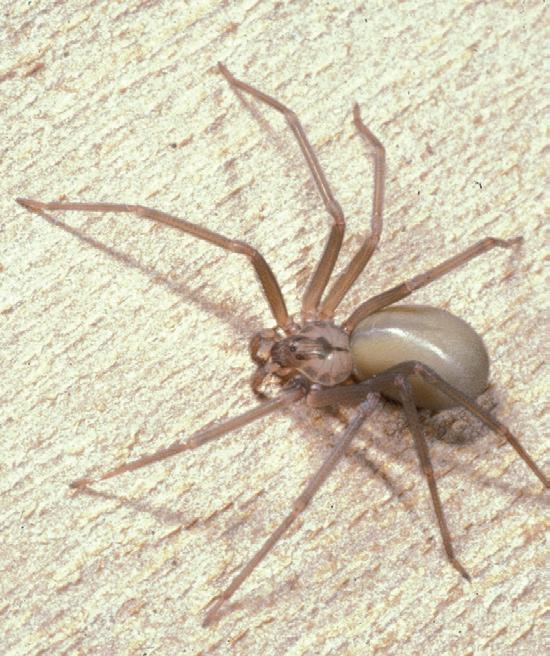
> All parts of the plant are toxic year ‘round, but they are more dangerous in the spring and summer when the oil content is the highest.
Prevention
> Learn to recognize the plants; plants may look different depending on the area where you live and the season.
> Remove the plants from the area, wearing vinyl gloves.
> If unable to remove, wear heavy clothing, long sleeves and long pants.
> If you are often in areas where poison ivy or oak grows, you may want to get a product (such as Tecnu or Zanfel) that is designed to remove the plant oil (urushiol) from your skin.


> Barrier creams and lotions can be used to prevent urushiol from contacting the skin or to reduce the severity of a reaction (these creams vary in their potency and are not always effective).
Take immediate action
If you have been exposed and are aware of it, you should:
> Use generous amounts of isopropyl alcohol to cleanse your skin before the poison can attach itself to skin.
> Wash skin with water.
> Shower with soap and water. (NOTE: Do not use soap and water before cleansing with alcohol because it can spread the poison around the skin’s surface).
> Clothes, shoes and tools should be washed with alcohol and water (be sure to wear gloves during this process).
The rash
> Redness and swelling appear in about 12 to 48 hours; blisters and itching will follow.
> Blisters are not contagious and do not spread the rash; however, do not scratch the blisters because fingernails carry germs that could infect the area.
24 | UAC MAGAZINE SAVE THE DATE SAFETY WORKS
Brett Marshall, Sault College, Bugwood.org Poison ivy
USDA APHIS PPQ - Oxford, North Carolina , USDA APHIS PPQ, Bugwood.org Poison Oak
Joseph Berger, Bugwood.org Sturgis McKeever, Georgia Southern University, Bugwood.org
Black Widow Brown Recluse
> The rash, blisters and itch normally disappear in 14 to 20 days without treatment.
Treatment
> Mild cases of itching: wet compress or soak in cool water.
> Moderate itching: oral antihistamines or topical hydrocortisone.
> Severe reactions: treat with prescription oral corticosteroids, which must be taken for at least 14 days, preferably over a three-week period.
When to seek medical attention
> If rash covers more than 25% of the body.
> Allergic reactions such as swelling and/or difficulty breathing.
> Severe cough or itching that cannot be controlled.
> If rash affects the face, lips, eyes or genitalia.
> If the rash shows signs of infection: pus or a yellow fluid leaking from the blisters, odor or increased tenderness.
Preventing snake bites
Some bites, such as those inflicted when you accidentally step on a snake, are nearly impossible to prevent. However, there are precautions that can reduce your chances of being bitten by a snake:
> Leave snakes alone. Many people are bitten because they try to kill a snake or get too close to it.
> Stay out of tall grass unless wearing thick leather boots; remain on paths as much as possible.
> Keep hands and feet out of areas you cannot see. Do not pick up rocks or firewood unless you are out of a snake’s striking distance.
> Be cautious and alert when hand pruning shrubs.
> If you or your coworker is bitten:
• Try to see and remember the color and shape of the snake, which can help with treatment of the snakebite.
• Keep the bitten person still and calm. This can slow down the spread of venom if the snake is venomous.
• Dial 911 or call emergency services (EMS).
Preventing spider bites
Black Widow spider
> The female black widow is the more dangerous. She is shiny, black and has a round abdomen with two yellow or red triangles that form an hourglass shape.
> Black widows’ webs are loose, irregular and resemble that of a mesh-type material.
> Webs can be found on plants, within loose stone or wood piles and inside irrigation valve boxes.
The bite
The black widow’s bite feels similar to a pinprick, if felt at all. If bitten, there will be two faint red spots surrounded by local swelling. Within 1– 3 hours, the pain will intensify and may continue up to 48 hours. The black widow produces a type of venom that affects the victim’s nervous system. There will be severe, rigid abdominal cramping similar to that of appendicitis, weakness, and tremor. In severe cases, nausea, vomiting, faintness, dizziness, chest pain and respiratory difficulties may result.
Brown Recluse spider
> Brown recluse spiders are notable for the characteristic violin pattern on their back, seen with the base of the violin at the head of the spider and the neck of the violin pointing to the rear.
> These small non-hairy spiders are yellowish-tan to dark brown in color with darker legs.
> They measure with legs about 1 inch in length.
> They have six eyes.
> They seek out dark, warm, dry environments such as porches, basements, woodpiles, old tires and underneath rocks and trash.
> Their webs are irregular and three dimensional.
The bite
Most bites occur during the summer months. The brown recluse venom is extremely poisonous, even more potent than that of a rattlesnake. This venom is a collection of enzymes. One of the specific enzymes, once released into the victim’s skin, causes destruction of local cell membranes, which disrupts the integrity of tissues leading to local breakdown of skin, fat, and blood vessels. This process leads to eventual tissue death called necrosis in areas immediately surrounding the bite site. The bite may not be felt, but within 1-3 hours, the area becomes painful and swollen. The secondary effects of the venom, although rare, can produce destruction of red blood cells, low platelet count, blood clots in capillaries and loss of ability to form clots where needed, acute renal failure (kidney damage), coma or death.
If you are bitten
> Wash the area well with soap and water.
> Apply a cold or ice pack wrapped in a cloth, or a cold, wet washcloth to the site.
> To protect against infection, apply an antibiotic lotion or cream.
> Take acetaminophen for pain.
> Seek immediate emergency care for further treatment.
> Prompt treatment is essential to avoid more serious complications.
SUMMER 2023 | 25 SAFETY WORKS SAVE THE DATE SAFETY WORKS
(Relative) calm after the storm Making the most of downtime
 by Erin Saunders, Leica Geosystems
by Erin Saunders, Leica Geosystems
Many work seasons are cyclical in nature, with periods of intense workloads and demanding hours followed by periods of relative calm. As a manager, it can be easy to focus solely on the busy season, when the pressure is on to meet deadlines and deliver results. However, it is equally important to pay attention to the less-busy periods and use them as an opportunity to reflect on the team’s performance, identify areas for improvement, and learn from past experiences.
Here are some ways in which you might use the less-busy periods as opportunities for reflection and development.
First, evaluate what went well. During the off-season, take some time to evaluate what went well during the busy season. Consider the successes your team achieved, such as meeting deadlines, completing projects on time, or exceeding customer expectations. Ask yourself what you can learn from those achievements and how you can replicate them in the future. Identifying these achievements can help boost morale and reinforce the team’s sense of accomplishment. This is also a great
time to explicitly recognize team members for their accomplishments. Recognition can sometimes get forgotten when workloads are demanding, and taking the time to do so now can go a long way in engaging the team.
Next, analyze what could have gone better during the busy season. Did your team encounter any challenges or obstacles? Were there any missed opportunities? Reflecting on these issues can help you identify areas for improvement and ensure that the team is better equipped to handle similar situations in the future.
This is also a great time to focus on having a growthbased mindset. People with a growth-based mindset are focused on continuous learning. They understand that mistakes and challenges are going to happen, and that sometimes they provide more opportunity for growth and development than successes.
26 | UAC MAGAZINE BUSINESS
Image by Kanenori from Pixabay
1.
2.
Encourage your team to provide feedback on their experiences during the busy season. This can be done through one-on-one meetings or team debriefs. By gathering feedback, you can identify issues that may have gone unnoticed and improve communication between team members.
Research shows that giving and receiving feedback can be stressful both for the person who is giving the feedback and the person who receives it. By asking your team for feedback, you’re making it safe for them to provide it to you in a non-threatening way.
You can ask what is going well, what would they like to see or need differently, and how you can help them. Those are all great places to start.
Based on what you’ve learned from reflection and feedback, you can use that information to set goals for the next busy season. Get buy-in and feedback from your team. Communicate these goals to your team and encourage their input on how to achieve them. By setting clear objectives, you can focus your team’s efforts and ensure that everyone is working towards a common goal.
Finally, use less-busy periods to invest in your team’s development. This could include training and development programs, skills-building workshops, or team-building activities. By investing this way, you can improve their skills and knowledge, increase engagement, and retain top talent.
We all know busy times can be demanding and stressful. However, the less-busy periods can be a valuable opportunity for managers to reflect on their team’s performance and learn from both successes and failures. By evaluating what went well, analyzing what could have gone better, encouraging feedback, setting goals, and investing in your team’s development, you can ensure that your team is well-prepared for the next busy season.
P: 770.326.9517
E: erin.saunders@leica-geosystems.com



SUMMER 2023 | 27 BUSINESS
Erin Saunders is Regional Human Resources Business Partner with Leica Geosystems, part of Hexagon.
About the author
Your Land. Our Care. Our dedicated teams, and our passion for landscaping shows in everything we do. Scott Watson scott.watson@LandCare.com 251-232-6830 LandCare.com Find out how we can create a meaningful landscape at your property.
3.
Does your CPA’s background matter? Why working with an expert in your field is important
 by Peter Thelen Sr., CPA, FMC, President of Thelen Financial
by Peter Thelen Sr., CPA, FMC, President of Thelen Financial
Well-rounded experience works to your advantage. What industry background do the CPAs or consultants on staff have in an industry outside of public practice? Often when you are in practice from day one you develop a very inside-the-box approach to things, making it difficult to understand why things may look different from your ideal idea. This can lead to unnecessary changes causing frustration for you or worse, leading you into costly compliance issues.
Recently I gained a client in the landscape industry who had been with a couple different big firms. When I say big, I mean top-20-in-the-nation sized.
He expressed frustration that his CPA and the consultants they assigned to his company just billed him a lot of money and didn’t really seem to ever have any answers to his questions. Because of my background in the landscape industry, he engaged me to look at what he felt was a sub-optimal profit margin and some frustration in the business stemming from poor business practices.
Each area of the business we looked at came back somehow to the accounting firm, whether it was vendor relations, with the accounting firm not processing payments correctly or timely, or payroll issues stemming from the accounting firm not understanding how the landscape industry was set up and not adjusting the payroll process to the industry. The deep dive into the accounting firm’s services uncovered thousands of dollars per year paid in property taxes on property that was disposed of but not recorded, tens of thousands of dollars of credits that are applicable to the green industry that had gone unclaimed for years, and many other issues.
Now, the purpose of this article isn’t to bash another accounting firm or another consultant; it’s simply to illustrate the point that even the most competent professionals become experts in their own fields. The CPAs and consultants my new client had employed were experts in a different field and they simply couldn’t spot the issues and didn’t know that there were industryspecific credits available.
To help you avoid some of these missteps, here is a list of considerations for you to discuss with your professionalservices providers before signing contracts or engagement letters:
The type of experience matters. Many industries parallel each other, so it may not be necessary for your CPA or consultants to have operated their own landscape company or have been the CFO of a landscape company, but finding professionals with industry experience in an industry with high turnover rates, mostly manual labor, weather-dependent jobs, and a seasonally driven cycle in revenue will put you in a great working relationship.
You get what you pay for. If your professional providers are inexpensive or the lowest bidders, you are most likely working with someone who needs a high volume of clients to provide the necessary revenue to stay in operations. While you want to make sure you are not being overcharged or unnecessarily billed, you do want to work with a provider who charges enough to keep the number of clients-per-provider low. The first sign that a professional provider is not confident in the value they offer is discounting on the invoice.
Being proactive is worth its weight in gold. None of us has a crystal ball, and none of us can predict all the outcomes. However, if you wait to involve your advisors (CPAs and consultants) until it’s too close to an event to make any changes, or worse, until after the event has occurred, you will not be able to get any value out of the involvement.
For example, I have a landscape client who comes to me each February with his QuickBooks file and other documents for his tax return. If he had a good year, he asks me what he can do to avoid paying a lot of taxes, but the thing about tax planning is it must be done ahead of time. Conversely, if he had a bad year, he asks me what he did wrong and what he needs to do to make more profit. But the year is already done, the die is already cast.
28 | UAC MAGAZINE BUSINESS
2. 4. 3. 1.
Image by Gerd Altmann from Pixabay
I always tell this gentlemen that he needs to call me midyear to discuss year-end tax planning, and if he is seeing low profitably, call me right away. Don’t wait until the year is gone!
To sum it all up
> Your CPA firm or your business advisor should be knowledgeable in your industry so they can provide advice with value and substance.
> They should be able to bring in real-world examples to help with trouble shooting or problem solving.
> They should be willing to proactively meet with you and discuss your upcoming plans and provide feedback in a relevant way.
> For these services, you should expect to pay a fair amount of compensation as these advisors are running a business just like you are. There is always a less-expensive consultant, CPA, tax preparer, or coach out there, but at what cost?
Our last thoughts
Your advisors can’t want it for you more than you want it yourself. Be willing to call and make that appointment, make that effort to keep them up to speed in your business, and your upcoming plans.
About the Thelen Financial

At Thelen Financial we are an experienced team of CPAs and fractional CFO consultants who specialize in working with the green industry and other similar parallel industries.
About the author
Peter Thelen is Founder of Thelen Financial, A Georgia Urban Ag Council member.
The former CFO of a landscape company, Thelen has spent the last decade either in a landscape company or other industry companies before moving into public practice.

SUMMER 2023 | 29 BUSINESS
3625 Brookside Parkway Suite 535 | Alpharetta GA 30022 678-526-6885 ext 13 | pthelen@thelenfinancial.com Cer tiied tur fgrass available in Mega-rolls, 30” rolls or slab pallets. Call Darren at 770-530-5078
Leading your team Solving the accountability problem
 by Brian Sulka, Professional EOS Implementer®at EOS Worldwide
by Brian Sulka, Professional EOS Implementer®at EOS Worldwide
Do you have problems with accountability in your company? Do you ask people do something and it does not get done? Or they say they will do something, and it does not happen, no follow up? Do you find yourself saying, “It’s just easier if I do it myself?”
Most companies have problems with accountability somewhere in the organization. I work with growing businesses and I often get asked, “how do I teach people to be accountable?”
You can’t and stop asking! It’s not your job to teach people accountability. It’s your job to create the opportunity, provide clarity, set expectations, and reward accountability. Lead them towards accountability, stop trying to manage it.
Do your employees get speeding tickets on the way to work in the morning? A 2021 Gallup poll revealed only 36% of employees are engaged on their job. 48% are searching for a job and 15% are actively disengaged. If you are a leader in a company, this should scare you and excite you. This stat tells us 64% of employees are not engaged.
It’s now normal for employees to not be engaged... that’s scary. But it should also excite you because building a great company where people are engaged is achievable and it’s not a mystery. If you are a leader in a company this needs to be your focus, not managing people who are not accountable.
At EOS® (Entrepreneurial Operating System®) we teach business leaders how to shift their mindset to address real problems in their business. We have some simple tools and a proven process that helps companies build the culture that attracts people who want to be accountable.
Many entrepreneurs know they need to focus on leadership so they do podcasts, books, seminars. Truth is, there are thousands of resources on leadership. Leaders could spend a lifetime investing in themselves and never touch the rest of the organization. The company needs a show-me-the-steps process for building successful cultures.
On a scale of 1-10, how accountable is your culture? If it’s less than 8, why is solving accountability not your biggest priority?
At EOS one of the tools we teach is called LMA™, which can be written as Lead+Manage=Accountability. The formula tells us that accountability is the result of good leadership and management. If you want to build a culture where everyone is accountable, your teams must master leading and managing. The good news is that almost everyone can master these skills. Once the leadership team does it, it becomes their job to teach everyone in the company how to LMA. Great companies have great bosses at every level of the organization. They surround themselves with great people (see my article, Right People, Right Seat, in the Spring 2023 UAC Magazine).
30 | UAC MAGAZINE BUSINESS
Photo by Markus Spiske on Unsplash
Leaders and managers
Leadership and management are two different roles, and both are essential in a well-run company. Strong leaders can mentally transition back and forth between these two roles. Leaders who cannot make this transition find a management style and become entrenched in it. They push that style down and force the results they want. Many strong managers find success in spite of their management style, further entrenching their style. These managers leave a wake of disengaged employees who sit around and come up with creative phrases like “quiet quitting.”
Leaders think on the business. Leaders make mental transitions from emails and phone calls to systematic, procedural and policy. When leaders are given space, they think about policies and procedures and come up with real and permanent solutions to problems. They see problems before they arise and ask leading questions like, “why are we having this problem?” instead of, “how do we fix this problem?” Many companies are not getting the results they want not because they don’t have leaders, but because leaders are not allowed to do their job. Leaders are spending too much time managing.
Managers, on the other hand, think in the business. They know how to quickly solve the immediate issues. They set clear expectations and have clear communication and measurements. They know how to get the job done efficiently.
Great companies have both great leaders and great managers. Great companies give leaders time to do their job and managers protect their time. On the other hand, normal companies have leaders who spend time managing and not protecting their time and confidence. How close to great is your company?
About the author
Brian Sulka is a Professional EOS Implementer® at EOS Worldwide, helping organizations clarify, simplify and achieve their vision.

P: 770-364-1136

E: brian.sulka@eosworldwide.com
W: eosworldwide.com/brian-sulka
SUMMER 2023 | 31 BUSINESS
Planning your marketing budget Budget with the end in mind
by Dylan Harper, Forge Marketing Group
In green industry businesses, where wordof-mouth is king, the marketing budget is often overlooked, added as an afterthought, or created independently of marketing and sales goals.
However, businesses that want to grow aggressively, achieve predictable growth, or break into new markets will find that a planned and detailed marketing budget is important and that developing the budget with the end goal in mind is even more critical.
With more ways to spend marketing dollars than ever before, the big question is: “How much should our business spend on marketing?”
You won’t like the answer, because it’s not a hard and fast number or just a percentage of your budget.
Your budget will depend on your business, your marketing and sales goals, your industry, the current market conditions, and your position in the market.
Though this article can’t give you a clear-cut answer on what your budget should be, it will provide exercises you and your team can follow to build a marketing budget your business can use.

Exercise 1
Define your financial limits. Crunch your numbers to determine three levels for how much your business can feasibly spend on marketing per month.
Low-end
This represents the level of spending you wouldn’t bat an eye to pay each month. This is often the level of spend most businesses will reach if they aren’t relying on marketing as a key driver of aggressive or predictable growth.
Sweet spot
This level represents an amount that is significant enough for you to pay attention to what it’s going towards and what returns it’s generating. However, it’s not enough money on the line to concern you if it isn’t put to effective use.
Stretch
This represents the level of spending your business can still support, but it will keep you up at night if you know it’s not being spent effectively or generating expected returns.
This level of marketing spend is only recommended if you are working with trusted and effective marketing talent (either an internal team or external agency) and there is a high degree of certainty that you will see returns on the money spent.
Exercise 2
Determine your customer acquisition goals. When planning your marketing budget, you’ll need to know what results you want to see. This exercise will help you determine how many new customers or accounts you want to gain after one year of leveraging your new marketing budget.
Default
This will serve as the baseline. It represents the amount of new business you would get if you didn’t change anything. The best way to get this value is by looking at how much new business was earned last year or by calculating the average number of new customers earned each year over the last three-to-five years.
32 | UAC MAGAZINE BUSINESS
BUSINESS
Photo Source: iStock by Getty Images
Favorable
This represents the number of new customers or accounts it would take to convince you that the new marketing budget was worth spending.
Everyone’s getting bonuses!
Jokes aside, this figure will represent the amount of new business it would take to reach a financial milestone (e.g. to add another truck on the road, to jumpstart a capital investment, to hire another overhead employee, etc.).
Exercise 3
Identify your revenue goals. As you were considering your customer acquisition goals, you probably began to think about the dollar amount associated with each level. If you didn’t, then now is the time to do so!
Even if you’d prefer to look at growth by customer acquisition rather than revenue, it’s still important to consider growth in terms of revenue for a couple reasons:
Customers vary
There is such a thing as an ideal customer, and a lot of it has to do with revenue and profitability. Some customers will earn you a lot more revenue than others, so it helps to know the average revenue or margin you want to earn per customer – especially if there is a lot of variation among customers or project types.
Growth alternatives
When you look at growth in terms of dollars, you might find that you can reach your revenue goals without having to earn it all through new customers. Depending on the services your business offers, there might be a ton of potential revenue to be made by upselling additional services to your existing or previous customers.
Exercise 4
Calculate your average Customer Lifetime Value

(CLV).
Knowing your customer lifetime value (CLV) for a typical customer will help inform your decision on how much you’re willing to spend to acquire a new customer or account.
CLV is a measurement of how much revenue a customer generates during the average amount of time they spend with your business.
CLV is especially important for businesses that offer recurring services such as turf or landscape maintenance since customers can stick around for several years – generating way more revenue than their first transaction or even their first year of transactions.
Exercise 5 4 4 4
Work backwards to build your budget. In exercises 1-4, you’ve determined the goals you want to achieve, how much your business is willing and able to spend to generate them, and what it will mean for the long-term growth of the business if the goals are met.
This last exercise will involve determining which marketing techniques and channels are best for generating the ideal results, and how much it will cost to attain them – ultimately giving teeth to your budget.
To build your budget, you will need to take your goals determined in exercises 2-3 and run them through a series of calculations to get an estimate of how much it might cost to achieve the desired results.
It will be helpful to work with either your internal marketing team or an external agency during this exercise as they will have insights into the different rates and costs needed to perform the calculations.
Depending on the marketing technique and channel used, some of the rates might include:
Average Costs to Run Advertisements
> Cost Per Click
> Cost Per Impression
> Cost Per Ad Placement
Average Response Rates (Conversion Rates)
Average Close Rates (by Your Sales Team)
The figure on the following page presents an example of how it looks to build a marketing budget by working backwards from your marketing and sales goals.
The variables for the example are as follows:
SUMMER 2023 | 33 BUSINESSBUSINESS
Image Source: Forge Marketing Group
4 4 4 4
Image Source: Forge Marketing Group
Customer Acquisition Goal: 50 New Customers

Average Close Rate: 40%
Average Conversion Rate (from Clicks to Leads): 4% Cost Per Click (CPC) for Ads: $6 Per Click
If you find that the estimated budget based on your marketing and sales goals does not align with a feasible level of spend highlighted in exercise 1, you’ll have to make adjustments to the goals, the level of spend, or both.

Note: Remember to weigh your budget estimates against the average customer lifetime value (CLV) you calculated in exercise 4 – as it may justify spending more on customer acquisition if customers will generate significant revenue over time.
Planning now can pay off later
Though building a marketing budget by working backwards from your growth goals is a tedious and often frustrating process, it will help you save your business from wasting money on marketing or from missing out on potential growth.
About the author
Dylan Harper is the Owner of Forge Marketing Group, a 13-person team providing online and print advertising for companies in service industries.

P: 678-904-5476
E: dharper@forgemarketinggroup.com
W: ForgeMarketingGroup.com
34 | UAC MAGAZINE
BUSINESS BUSINESS
Frustration around high renewal increases
Lack of plan understanding
Insufficient time to explore options
Plan dilution
ICHRA, Captive and Self-Funding Expertise

SUMMER 2023 | 35
Smart moves
Smart irrigation controllers focusing on advancement
 by Kristen Hampshire for Lawn & Landscape magazine
by Kristen Hampshire for Lawn & Landscape magazine
Alexa, turn on the lights. Alexa, lower the thermostat by 3 degrees. Alexa, where’s my stuff?
“You can talk to your appliances and other devices in the home, and we feel it shouldn’t be any different in an outdoor landscape system,” says Orion Goe, senior channel manager, Toro, explaining how smart irrigation systems have evolved from weather stations to wireless controllers. Now there are robust app-based platforms that give consumers and professionals a real-time view of an irrigation system with data-driven alerts.
Advanced technology makes it easier
Today, “smart” means Internet connected, says Rain Bird’s Joe Porrazzo, marketing group manager of the contractor division and lead for the residential controller team. Advancements are making the technology easier for landscape professionals and their clients to adopt.
With a focus on connectivity, integration, usability and data, the smart controller space is evolving at a fast clip — albeit behind home automation — and an intuitive ecosystem is on the horizon. There’s demand for it.
Customers are looking for more than savings on their water bills, Goe says. “Five years ago, we talked only about water efficiency in dollars and cents, and how, ‘The system will save you this much,’” he says. “Now, dollars and cents are just as important as the water you will save because we are in a water crisis. It’s economic and ecological conservation.”
And basically, smart systems are expected today.
“Modern consumers are accustomed to doing everything from smartphones, and now they expect that kind of functionality in every appliance they buy,” says Dave Shoup, product manager, central control systems, Hunter Industries. “Like many things in tech, it has gone from an exclusive function of very high-end controllers to a
36 | UAC MAGAZINE BUSINESS BUSINESS
For professionals, the labor savings, profit possibilities and sales add-ons with smart controller systems are a real opportunity. With commercial and residential customers’ savvy, thanks to our friend Alexa, and other smart home systems, irrigation industry experts expect this arena to continue accelerating with even more capabilities.
standard. Customers can enjoy their own remote access to the irrigation system, as well as allowing professionals remote access.”
For professionals, the labor savings, profit possibilities and sales add-ons with smart controller systems are a real opportunity. With commercial and residential customers’ savvy, thanks to our friend Alexa, and other smart home systems, irrigation industry experts expect this arena to continue accelerating with even more capabilities.
“Automation users monitor and control resources over many types of devices — HVAC, alarm systems, pumps, tanks — and they are not understanding the benefits of including irrigation in these large custom systems,” Shoup says.
Redefining smart
First, let’s rewind and redefine “smart,” because the idea has morphed during recent years.
“Smart controllers have come to mean many things to different users,” Shoup says. “Many use it to mean controllers that automatically adjust irrigation amounts based on climate or soil conditions.”
This can be accomplished with local sensors or online data.
“One of the bigger advances has been the availability of connected controllers, and the ease of connectivity and use,” he continues. “Another emerging trend, particularly in large systems, has been the integration of irrigation controllers directly into building, campus or city-wide automation systems.”
Controllers that are Wi-Fi connected can be a game changer for landscape professionals and their clients. Porrazzo explains the evolution at Rain Bird, which essentially began with an add-on module in 2016 that provided Internet connectivity to its existing line of controllers. That way, irrigation professionals could literally plug and play. “We added a thumb-drive looking component that takes a few seconds to install and set up in a mobile app,” he says.
Then in 2021 came Bluetooth connectivity. (Again, connectivity is the key.) Basically, this was Gen II and meant the plug-in included new features that made linking the system to the app and monitoring easier.
“Many contractors prefer a web platform where they can manage many controllers at one time, make batch edits and send permissions for crews,” Porrazzo explains.
“There is software that makes it very fast to program so you can save an irrigation schedule and use it over and over. You can say, ‘Copy this program into this new controller,’ and it programs in less than 90 seconds.”
Ease and speed are crucial for contractors and customers.
At Rachio, the company followed consumers during their use of smart controllers to see what features they embraced. “We wanted to learn how they use the product,” says Chris Klein, co-founder and chief product officer. “If you think about it, a lot of this is about usability and simplifying the system.
“We want to make sure the system connects with WiFi when you get it out of the box and you are not going through a multi-contact situation with customer support, resetting routers and stations to get the controller to work,” Klein adds.
Because let’s face it, we’re impatient people. And that applies not just to property owners and managers, but professionals who realize setup time is non-billable hours.
Realizing ROI is crucial. Rachio conducted a study with Redwood City, Calif., and Stanford University in partnership with local utilities. “They took it upon themselves to do a multi-year study with Rachio controllers to verify, without us, that these smart systems would do what they said they are supposed to do,” Klein says. “With that efficacy data, we have proof that they do save water.”
As for what “smart” means, another compelling component is leveraging data, Klein notes. “In the irrigation space, smart scheduling is more than skipping when it rains — it’s shifting when seasons change and watering based on soil moisture that can be driven from weather stations and not necessarily soil sensors,” he says.
Data will help “productize” smart controllers.
“You can find out how much water you are using, how that changes every year and every month, and even on a daily basis to show if there are leaks, high flows or low flows,” Klein says. “Data coming from the controller can tell us if we have a slow burn on a valve.”
For a professional who is managing hundreds or thousands of controllers from a single platform, diagnosis is significantly less time consuming. And it does not necessarily require a site visit.
“We get data in different ways, whether form the water service that can help us out or from soil moisture sensors,” Klein says.
Selling points
More than ever, consumers are requesting smart systems. “Homeowners are influencing what products go on the wall,” Porrazzo says.
SUMMER 2023 | 37 BUSINESSBUSINESS
Though in plenty of instances, clients might not realize that the same smart-home type technology can be implemented outdoors in the landscape. So, there is some education — including explanation related to cost.
“Smarter systems generally are slightly more expensive than simple timers, but the payback in water savings, remote management, plant health and alarm monitoring easily justify a premium controller price,” Shoup says.
Rachio sells directly to consumers and professionals, and Klein says the price point has actually decreased. “Inflation is top of mind and we have held or lowered our prices over the years, and that is something we continue to look at: How can we continue to add value?” he says.
Peace of mind is also a selling point. “Just knowing the product is on the property and will detect rain falling gives people confidence because in many markets across the country and outside of the country, you can get fined if a system is running while it is raining or if the temperature drops below a certain level,” Porrazzo says. For professionals, smart controllers allow them to service customers efficiently. “They can at least do some highlevel troubleshooting remotely,” Goe says. “So, 15 years ago if a homeowner called and said, ‘My system isn’t turning on,’ or, ‘My system won’t turn off and the water is still running,’ you had two choices. You could get in the truck and drive out to the property, or you could talk the customer through the process of finding the right button on the controller, which isn’t a great experience on either side of the equation.”
Now, professionals can remotely turn off a system to prevent water waste or identify if there is a leak. Then a service call can follow.
“Controllers can be adjusted and report alarms directly to a smartphone, reducing the number of site visits,” Shoup says. “These services also create a value-added benefit that can billed as part of a maintenance agreement by professionals.”
The evolution of battery technology also makes wireless controllers and components more practical, Porrazzo notes. “A lot of our wireless products can go up to six years or more with everyday use on the same battery and that makes it easier for customers,” he says, adding that after some consumer research, professionals are divided on how they feel about the call to replace a battery.
“Some want it to last longer so they can move on to the next job, and others like to replace the battery because it’s a service call and they can upsell it, so it gives them a reason to go back on a property. It depends on the business model,” Porrazzo adds.
What’s next?
What’s next in smart irrigation technology? “People want everything in their yard to be wireless, and they want more and different kinds of sensors,” Shoup says. “These are trending topics.”
Goe says technology continues to advance — and there are wireless flow sensors and above-ground connected devices. “But the technology is at a point where anything that is subterranean for Wi-Fi isn’t there yet,” he says. Does everything have to be Wi-Fi enabled to be “smart” and connected? Not exactly.
“There is no reason why all of these devices can’t ‘speak’ to possibly a common receiver and that receiver is talking to Wi-Fi or the cloud. So instead of building Wi-Fi into every device, you can have an integrated system that talks back to the cloud. But in terms of the sensors and controllers or whatever else in the landscape and how those components ‘speak’ to the receiver, maybe it’s Wi-Fi, maybe radio, maybe a good, old-fashioned wire.”
~ Orion Goe, Toro
When Porrazzo first dug deep into the connected world at Rain Bird in 2016, “everyone wanted to be wireless and in the cloud,” he says.
“I’m really curious to see if there is a move back to on-site, on-device monitoring and that is something we have seen in the last couple of years. For example, we assumed our wireless sensor business would slow as Wi-Fi technology got better, but that’s not the case. Water districts and public agencies almost double down on physical technologies like rain sensors, soil sensors and flow sensors.”
~Joe Porrazzo, Rain Bird
38 | UAC MAGAZINE BUSINESS BUSINESS
Why during a move toward everything connected is there also a shift toward “grounding” tech to a location?
“We were hearing from customers that they needed rain sensors on the property because it could be raining at their house but sunny across the street,” Porrazzo says, relaying feedback from the field. “Those are things that Internet-connected weather can’t get, and it doesn’t matter how accurate the service is. It will never be as accurate as on-site sensors.”
Goe adds, “I’m excited for systems to get even smarter and more intuitive. For example, take the Nest thermostat in my home. It learned my patterns so when I get up in the morning, it kicks on to 72 degrees, and when everyone leaves the house, it ratchets it down to 68. Our irrigation systems will become smarter in that sense. They will become more intuitive.”
Also on the horizon: sensors with predictive capabilities. Goe illustrates how. “Say the sodium levels in the soil jumped up 15% in the last 16 days. The system says, ‘You should do this.’ Then the system can ping a contractor with suggestions, tools or products they can present to their customers to maintain the health of the landscape. That’s where we are going.”
Goe compares this to Amazon offering suggestions after you search for a purchase. “Did you think about this? Did you see that? We might start to see tools like that from an irrigation perspective,” he says.
Overall, the existing and emerging technology will go through a survival of the fittest evolution. “We’re seeing competing technologies like the old days of BlueRay vs. HD and VHS vs. Beta Max, and we are waiting to see which technologies are going to win,” Porrazzo compares.
And at the end of the day, customers want their irrigation products to be “faster, smarter, smaller, better,” Porrazzo says of consumers and professionals. “Overall, people expect more of their systems.”

About the author
Kristen Hampshire is a freelance writer based in Cleveland, Ohio.
Reprinted with permission from the February 2023 issue of Lawn & Landscape. Visit www.lawnandlandscape.com for more information.
SUMMER 2023 | 39 BUSINESSBUSINESS
2023 legislative session Key policies for urban ag passed
 by Bryan Tolar, Tolar Capitol Partners
by Bryan Tolar, Tolar Capitol Partners



The 2023 session of the Georgia General Assembly wrapped up with the usual flurry of activity along with a heavy dose of organized chaos. Regardless of how it may appear at times, there is much to appreciate about the policy process and the results generated. In a nutshell, this session was very good for issues of interest to UAC members and the urban ag industry. This year was also among the most unique in fifty years. The influx of over four dozen new legislators, coupled
with a new Speaker of the House and a new Lieutenant Governor in the Senate made for interesting dynamics from the start. Over twelve weeks, this social experiment of personalities and political ideology forged a new group of leaders that ultimately found their stride. The resulting framework and experience will provide for a more nimble and crafty group moving forward. Building relationships at the Capitol is a constant process and is key to our interests. We are grateful UAC is respected and heard across the Capitol building.
Top on our list of industry advancements was the proactive measure we took to stop the growing actions of local governments banning gasoline powered leaf blowers. We heard your concerns and tracked the initiatives underway in other states so we could plan our legislative remedy for Georgia…and it worked. On May 2, UAC joined Governor Kemp and key legislative leaders as he signed the Landscape Equipment and Agricultural Fairness (LEAF) into law.
Senator Shawn Still (Johns Creek) championed our bill from the very start and remained fully committed to the effort. With his leadership, we maneuvered the hotly contested bill through the Senate in February. With the assistance of Representatives Brad Thomas, Victor Anderson, and Joseph Gullet, the House approved the bill in March to send HB 374 to the desk of Governor Kemp.
We are pleased the LEAF Act received healthy discussions in both the House and Senate, allowing lawmakers to hear the concerns of our industry on this issue. Legislators jumped in during debate to point out the importance of this issue to the landscape industry as well as construction and pest control industries. During
40 | UAC MAGAZINE INDUSTRY
Senator Shawn Still with Georgia UAC Executive Director Mary Kay Woodworth
Rep. Patty Bentley Rep. Rick Townsend
debate on the House floor, Rep. Rick Townsend (Glynn County) spoke to the importance of gas leaf blowers and their use to clear debris after storms and Rep. Patty Bentley (Taylor County) expressed her support for the uniformity the LEAF Act provides for landscape businesses. In the end, the vote count was very close. Thankfully the bill received support from Democrats and Republicans alike.
Simply put, HB 374 solidifies the protection of consumer choice. Gas powered, battery operated, and manual tools for managing landscape debris, construction sites, and pest control all have benefits to consumers. In recent years, we have seen a growing number of communities craft arbitrary restrictions on gas powered equipment in numerous states.
This law protects the freedom of citizens and businesses to choose the tools that best fit their needs. For our members in the landscape and urban agriculture sectors, this law was necessary to protect against the confusion of varying ordinances and allow you to decide if you invest in gas blowers vs. electric blowers for your business.
Georgia is the first state in the nation to codify the protection of use of this equipment. We believe other states will follow Georgia’s lead to protect their business communities and property rights as well. It prevents any local prohibition or regulation from creating differing standards for or distinguishing gasoline-powered leaf blowers from any other gasoline-powered, electric, or similar such equipment or any other type of leaf blower. We appreciate the vocal support of hundreds of UAC members as well as industry allies to help us advocate for this important industry protection.
Another key legislative focus this year was HB 189, the truck weight bill seeking to boost the overall weight limit 4,000 pounds on state highways, moving the cap from 84,000 to 88,000 for agriculture and forestry sectors. This bill became effective upon Governor Kemp’s signature, which took place May 2. It is only in effect for two years. It will then be re-evaluated for updates and changes.
This bill was a slugfest from the start. It came down to the wire on the final day of the legislative session where a conference committee of the House and Senate hammered out a less than perfect solution that satisfied some of the needs of interested industries but fell well short of the overall objective.


These heavier loads can be hauled within a 150-mile radius from the point of origin, but Metro Atlanta area senators took action to restrict them from the 13 county Atlanta area. In these counties the limit remains 84,000lbs. Historically, the Motor Carrier Compliance Division (MCCD) for public safety enforces truck weights on state roads, but this bill allows local law enforcement to patrol weights on city and county roads after receiving credentialed training. Overweight penalties also were set at 5 cents/lb. for loads between 88,001 – 93,000 lbs.; 10 cents/lb. for loads between 93,001 – 100,000 lbs.; and 15 cents/lb. for loads over 100,000 lbs. A similar penalty structure was affixed to loads crossing posted bridges as well.
We thank Rep. Steven Meeks (left) and Sen. Russ Goodman for working diligently with us on turfgrass industry interests. Multiple letters by UAC, member testimony in committees, and video helped showcase the importance of this issue to turfgrass growers and our industry. This issue won’t be going away anytime soon as state leaders focus on a multibillion-dollar initiative to fund big picture transportation projects and rules for moving freight in the future.
Speaking of billions of dollars, the $32.4 billion FY 2024 State Budget was the only bill that constitutionally had to pass the legislature. Concerns about a slower economy looming in the future kept lawmakers somewhat conservative in their commitments. It took extra time, but lawmakers found middle ground by providing significant pay raises for law enforcement, teachers, and state employees, plus record investment in K-12 education. The HOPE scholarship was also bolstered to cover 100 percent of tuition and the UGA CAES budget received $258,750 to provide three shared 4-H county extension agents. In addition, the Department of Education received bond funding in the amount of $1,105,000 to purchase agriculture education equipment statewide.
SUMMER 2023 | 41 INDUSTRY
Higher education programs received additional funding as the Technical College System of Georgia picked up $8,230,958 for the first year of a three-year phase-in for increased credit hour earnings for the Aviation, Commercial Driver’s License, and Nursing programs to reflect the high cost of providing these programs. Bond funding for the University of Georgia saw $29,800,000 to fund construction of Phase II of the Science and Ag Hill Modernization project at the Athens campus.
Georgia’s metal theft prevention laws received some important modifications this session.
Senate Bill 60 by Senator Bo Hatchett will provide modest reforms to Georgia’s metal theft prevention laws and add tools to crack down on catalytic converter theft. UAC worked with Sen. Hatchett to limit cash payments to just two transactions of $100 or less per person, per day. We remain concerned that cash payments could influence the sale of stolen metal goods, including those from UAC member farms, nurseries, and businesses. The cash payout provision is also limited to just two years. The bill includes several excellent additions that allow law enforcement better legal tools to crack down on catalytic converter thefts. Cash payment for catalytic converters is strictly prohibited.
In addition, Representative John Corbett crafted a bill to create a 17-member Georgia Motor Vehicle Crime Prevention Advisory Board to aid in the “prevention, reduction, and investigation of motor vehicle and motor vehicle parts theft.” It establishes a grant program to provide funds to local law enforcement agencies and multi-jurisdiction task forces. Funding can come from federal grants as well as private donations. The program will remain in place through 2030 and may be extended at that time.

Lobbying starts with relationships, and we are proud to work each day to be a resource for legislators and share with them our UAC challenges, environmental benefits, and economic opportunities.
One topic of interest regarding workforce development did not see much action this legislative session but remains in play for 2024.

Representative Kasey Carpenter has been a constant leader and voice of reason for changing higher education tuition requirements of DACA (Deferred Action for Childhood Arrivals) students. Current tuition rates are nearly three times the in-state tuition rate even though these students live in Georgia and graduated from Georgia’s K-12 schools. HB 131, the Workforce Development Act is in the House Higher Education Committee, but only received a hearing with no vote taken this session, leaving this opportunity in limbo. We hope to see the legislature take action on this bill next year to help aid in workforce education and development.
Finally, the work of the House Rural Development Council will continue through 2024. The Council was created in 2017 to encourage economic growth and job creation in rural communities. House Speaker Jon Burns appointed Representative Gerald Greene (R-Cuthbert) and Representative Mack Jackson (D-Sandersville) as Co-Chairmen. This council can serve as a testing ground for looming policy issues impacting businesses across Georgia. Workforce development initiatives should be on their short list.
Thanks so much for your support and trust in UAC to lead on industry policies. We are proud to work on behalf of UAC members – as reflected in the passage of the bill protecting gas-powered leaf blowers, your voice and your support make a difference. The advocacy efforts that annual membership dues support allows us to create successful business environments for the entire industry. We appreciate your membership and team efforts.

42 | UAC MAGAZINE INDUSTRY
UAC works closely with Tolar Capitol Partners, monitoring and reporting weekly during each legislative session through Capitol Connection updates. These e-newsletters also include short surveys to "take the pulse" of our UAC members on important issues. If you work for a UAC member company and would like to be added to this email list, please contact us at office@georgiauac.com or 706-750-0350.
As we head into crunch time of the legislative session, which of the following topics is of the most interest to you?
Which of the following best represents your view of gambling proposals?
No thanks. I’m opposed to these gambling initiatives in Georgia
I support all forms of gambling...let me place my bets.
As the flowers bloom and landscapes wake up, how are you doing with meeting your staffing needs?
We are actively recruiting every day trying to expand our team ......................................................................................
Tough to get the workers we need...and we need a bunch!
My company has a good crew on hand - we will be okay
Federal Visa guest-workers are arriving soon and will meet our demands
What grade would you give your outlook on the economy for the remainder of 2023?
I am hopeful, so I give it a A. I will continue to be cautious yet optimistic
I am concerned, so I give it a C. The impact of higher prices is taking a toll
I am encouraged, so I give it a B. I feel like this will be a good year
I am afraid to look, so I give it a D. I believe we are headed toward a big mess
Based on the legislation impacting our industry, tell us what grade you give the 2023 Georgia General Assembly.

A: They seem interested in our industry initiatives ...............................................................................................................
B: I saw some progress...it is encouraging
C: They could have done so much more
D: They fumbled too much stuff...............................................................................................................................................
SUMMER 2023 | 43 INDUSTRY
Defend the use of gas-powered
blowers ........................................................................................................................ 38% Improve access to higher education for all Georgia students 18% Boost truck weights for sod and other ag/forestry products ............................................................................................ 13% All of the above ........................................................................................................................................................................... 31%
leaf
38%
26% Allow
17% Provide a path to
more
to
tourism......................................................................................... 12%
7%
..................................................................................
online sports betting from the comfort of my phone
build one or
casinos
drive
I love the ponies - allow those horses to race
31%
28%
................................................................................................. 26%
...................................................................15%
.................................................................. 30%
26%
............................................................................... 24%
........................................................... 20%
40%
32%
17%
11% Q Q Q
Q Q
Investing in tomorrow
Growing job education grows job opportunities
by Mary Kay Woodworth, Georgia UAC Executive Director
A recent economic analysis of Georgia’s workforce shows we are home to 2.1 million jobs in STEM (science, technology, engineering, and math) related fields and more than half are held by residents who do not hold a bachelor’s degree.

Data from the U.S. Bureau of Labor Statistics (BLS) showed Georgia added more than 186,000 STEM jobs between 2017 and 2021, an increase of 9.6% -- twice the national average of 4.7%. STEM positions now represent one-third of the state’s labor force and almost 39% of gross domestic product.
As a member of the Georgia Urban Agriculture Council, such growth and demand come as no surprise. Our coordinated efforts with the University of Georgia, technical colleges across the state and workforce development programs such as FFA and Skills USA are all geared toward attracting students to the landscape industry sectors, most of which are STEM related.
Georgia’s economy is deeply rooted in agriculture and agribusiness while new industries are making great strides in biotechnology, electric mobility, health and logistics. This diverse, successful economic engine thrives on STEM education and employment.

According to the “People of Science” economic analysis, 56% of Georgians who are STEM professionals do not have a bachelor’s degree – earning their training through community colleges, apprenticeships, the military, vocational training and other technical education programs. The number of STEM professionals nationwide who do not hold a high school diploma is roughly equal to those who have doctoral or professional degrees.

STEM positions now represent one-third of the state’s labor force and almost 39% of gross domestic product.
~ U.S. Bureau of Labor Statistics
The analysis effort was spearheaded by Science is US, a foundation-supported effort that brings together a diverse group of science, engineering, industry, higher education and labor organizations to galvanize a broad, bipartisan political base of support for science and technology.
The People of Science analysis was conducted by FTI Consulting and the analysis compared BLS data from 2017 and 2021, the most recent year available. The report also found that:
44 | UAC MAGAZINE INDUSTRY
There are over 2.1 million STEM professionals in Georgia, comprising 34% of the state’s workforce; 39% of the state’s economy is directly attributable to STEM activity with $266.7 billion directly contributed to Georgia’s GDP;
55.9% of the state’s STEM professionals do not hold a bachelor’s degree; and
State and local tax revenues generated by STEM employment totaled 2021 to $58.7 billion.

“With its very low unemployment rate Georgia faces a particular need to educate, train and recruit STEM professionals of the future, so it is critical that educators, business leaders and public policy makers work together to develop a workforce ready and able to lead in the next STEM generation.”
~ Rachel Kerestes, Executive Director, Science is US.
Fueling opportunities
UAC will continue to invest time and resources to expand the outreach to potential employees as well as support state and private funding initiatives to fuel these education opportunities.
It is also critical to the future STEM labor pool that educators and parents support pursuits for all aspects of education. There is a role for job training, technical college credentials, as well as university degrees. STEM related jobs can be found in each of these program structures.
About People of Science
Science is everyone and everywhere. And science is the American economy. More than 67 million workers in the United States are STEM professionals–34% of the nation’s workforce–the majority of which (55%) do not hold a bachelor’s degree.
For more information on the People of Science economic analysis, visit scienceisus.org/people-of-science.
> Read the full report
> See the executive summary
> Get the news release
SUMMER 2023 | 45 INDUSTRY
4
}
4 4 4
Tree industry licensure Legislation


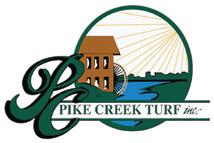



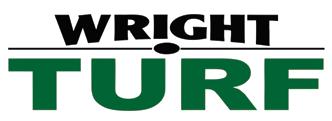





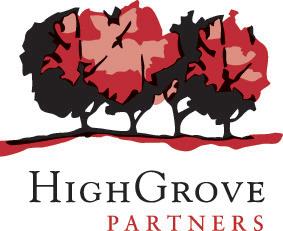
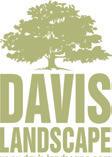
Recently, the Georgia Legislature assigned a resolution to the committee on regulated industries to hold hearings regarding a bill for possible new legislation.

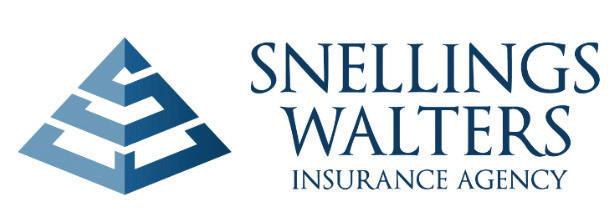
The goal of that legislation would be to bring standards and enforcement to the tree industry in Georgia through required licensure.

GFASTI (“Georgians for a Safer Tree Industry”) is a nonprofit dedicated to licensure for tree care operators. The GFASTI Board will likely meet with Chairman Powell and other members of the committee on Regulated

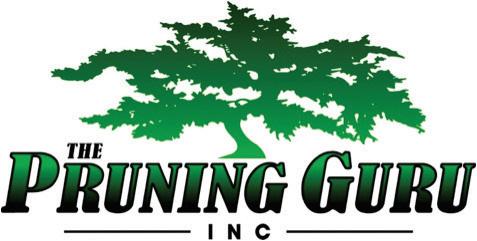
Industries before hearings start in September to advocate for licensure. The hearings could lead to the drafting of a bill for licensure.
The prospect of licensure has implications for all stakeholders within the tree care industry, and we believe those stakeholders should have the opportunity to learn about the proposal, and engage as their time and interest permit. Learn more about licensure at www. safertreeindustry.org. If you have specific questions beyond what you can learn from the website, feel free to reach out to the GFASTI President: Tierson Boutte at tierson@bouttetree.com
GFASTI is willing to entertain input from any source within the industry, including consultants, municipal arborists, utility companies, and others.


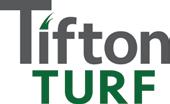

46 | UAC MAGAZINE INDUSTRY
would bring standards and enforcement Thank you to all of our SEED sponsors! Gold 706.750.0350 | office@georgiauac.com | urbanagcouncil.com Diamond Platinum Contact us today to see how you can become a SEED Sponsor! Silver SEED sponsorship opportunities support | energize | enable | develop SEED sponsorships offer our members an opportunity to promote their businesses and support UAC at a level beyond the membership dues. seed URBAN AG GEORGIA COUNCIL support | energize | enable | develop Chatham Landscape Services | Crabapple Landscape Experts | Falling Leaves Lawn Care | Georgia Crop Improvement Association | Hunter Industries | The McKinley Group | Outdoor Expressions Beyond the Curb Landscaping | Southern States Turf Division
With over a decade in development and research, Innovation® Zoysia’s cutting-edge qualities beat zoysias of the past. Deliver THE superior zoysiagrass to your clients.

|
The simple truth of integrity
Turfgrass certification protects more than just grass
by Bryan Tolar, Tolar Capitol Partners
Choosing a top turfgrass cultivar and utilizing a robust, respected third-party certification program solidifies the integrity of the cultivar and the brand of the farm that produced it. Such trustworthiness is at the core of integrity. It takes years to earn it but can easily be lost.
Validation of your trustworthiness must be constant. Doing so will increase the value of your products and your business – it means everything. It is your “blue box” of consumer anticipation.
“You’re either elite or you’re not,” says University of Georgia Head Football Coach Kirby Smart. A certified winner himself, Coach Smart should know.
What’s the value of certification for turfgrass? According to the U.S. Patent and Trademark Office, a certification mark shows consumers “that particular goods and/or services, or their providers, have met certain standards.”
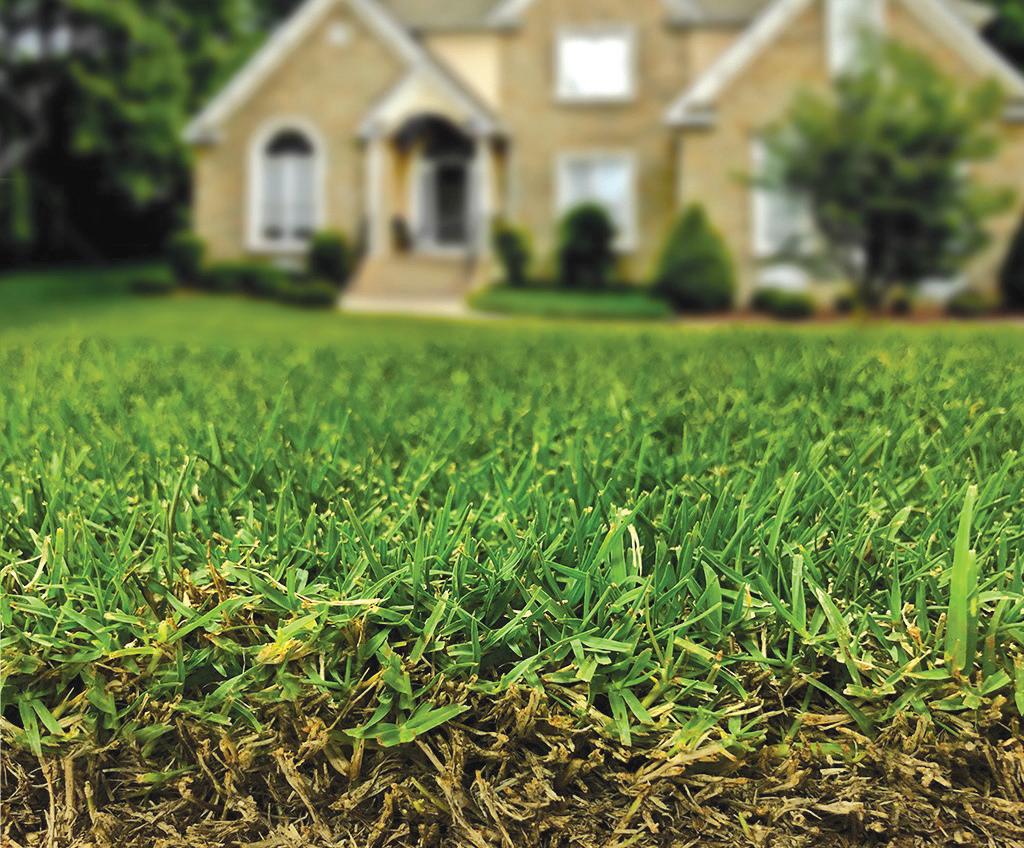
Symbolism is great, but integrity is what matters. It’s a universal truth that confidence in a person or product sustains brand value, whether for automobiles, electronics, whiskey – you name it. With stiff competition in the marketplace and ne’er-do-wells pitching knockoffs, the integrity of a product and faith in the people behind it cannot be faked, undercut or understated.
So it is with turfgrass. A certified cultivar is more than just grass – it’s turfgrass with integrity.
Consider Tiffany & Co. For nearly 200 years, Tiffany’s little blue box has been its statement of quality, even before the fine jewelry inside is visible. The distinctive, trademarked “Tiffany Blue” creates breathtaking anticipation because of the integrity of its brand: soughtafter elegance, renowned craftmanship and international prestige.
Tiffany’s marketing slogan? “Who said red is the color of love?”
Such stature is earned.
Tiffany’s fine jewelry is usually reserved for special occasions then carefully stored away until the next wear. Consider the expectations, then, for a product undergoing regular use. One visible for all to appreciate on a daily basis. Should your expectations for turfgrass be anything less?
In short, certification by the state crop improvement association provides a process attesting to a level of achievement.
So it stands that obtaining and protecting the integrity provided by turfgrass certification can make a sod grower elite.
The process adds value and elevates the product to a higher level. Not only that, but turfgrass certification validates being invested in industry oversight that solidifies your integrity as a producer.
Not all turfgrass cultivars can be certified by the state crop improvement association because the rigorous comparative evaluation standards and scientific peer review can’t be met, but those that can, should.
Standing behind the product
The ultimate responsibility for protecting the purity of a turfgrass cultivar lies with the grower, through farming practices. Turfgrass certification is not just for the grower, however. It is also a commitment to grow the best, backed by rigorous third-party oversight, to assure the earned integrity customers are seeking. State authorities, as appropriate, and licensees of the cultivars also play a critical role in this process of achieving and maintaining integrity. There is no substitute, and presenting such certification to buyers and end-users demonstrates these
48 | UAC MAGAZINE URBAN AG
products are the best the market has to offer; that you stand behind your product. Remember, you’re either elite or you’re not.
The importance of that blue tag
Each state operates a Crop Improvement Association Certification (CIAC) program. The blue tag of these crop improvement associations is the ultimate quality control marker for warm season, vegetatively produced turfgrass cultivars. Blue tag validation shows landscapers, contractors, and consumers that the sod meets all state CIAC rules and regulations.
No blue tag means “no certification.” While its absence is not necessarily a sign of a bad actor, the CIAC blue tag serves as a warranty by preventing the sale of turfgrass varieties in the certification program when contamination is documented and not properly rectified. “Certification is the highest quality classification in our industry,” asserts Charles Harris, the CEO and cofounder of Buy Sod, Inc.
Buy Sod operates sod farms in five states and is enrolled in the CIAC program in each because Harris sees the added value of a high confidence level in quality turfgrass for his company and customers: “It validates the best products of the highest quality. That’s where we want to be.”
“I believe CIAC is the standard for what it means to achieve the best quality plant material,” says Harris, whose company is based in Pinehurst, NC. “These inspections have teeth. They matter. Professionals in turf management as well as consumers have high expectations that can only be met by a rigorous thirdparty certification process. We are proud to support and participate in these initiatives. It’s a differentiator and makes us better.”
Paths to integrity
Multiple paths lead to increased integrity. Agribusinesses licensing turfgrass cultivars rely on third-party certification and inspection programs as they move to commercial production. Genetic purity is essential at each step, from breeder, to foundation, to nursery, to production.
The Turfgrass Group is among the licensors of turfgrass cultivars. The Cartersville, Ga., organization’s commitment to excellence ensures its licensed growers – “Certified Growers” – are in a position to be elite. Bill Carraway, Vice President of Sales and Marketing with The Turfgrass Group, Inc. proclaims, “Certification is a fundamental imperative by which we operate. Maintaining the genetic integrity and provenance of our cultivars is what sets us apart.”

That commitment starts with complying with respective state certification standards and licensing a limited number of certified producers. Farm visits, inspection, and quality control reviews throughout the production process are all mandatory, critical steps in the process.
Dr. Brian Schwartz is a professor of turfgrass breeding and genetics at the University of Georgia. As one of the nation’s top turfgrass breeders, Dr. Schwartz is on the patent for at least three turfgrass cultivars. His resume includes a Ph.D. in plant breeding from the University of Florida and a B.S. and M.S. from Texas A&M University. It’s no surprise this scientist looks even beyond the assurance of the CIAC blue tag and hones in on thirdparty certification as preservation of the research process.
“When properly implemented and enforced, it stops problems,” Dr. Schwartz says. “Investing in a breeding program to develop emerging cultivars only makes sense if steps are being taken to protect them from contamination. I believe in the certification system. I know it delivers the highest quality product with the most value. It is the only way to protect the integrity of plant performance over time.”
Integrity represents a reputation for hard work and excellence. For turfgrass, third-party certification is the outward demonstration of an internal commitment to integrity. It is Tiffany’s “blue box” and eliminates “seeds of doubt.”
Blue tag validation shows landscapers, contractors, and consumers that the sod meets all state CIAC rules and regulations. While its absence is not necessarily a sign of a bad actor, the CIAC blue tag serves as a warranty by preventing the sale of turfgrass varieties in the certification program when contamination is documented and not properly rectified.
SUMMER 2023 | 49 URBAN AG
Dazzling display in the shade 20 best hosta companion plants
by Janet Loughrey for Proven Winners
Hostas are reliable perennials with impressive foliage that thrive in shade gardens. There are many plants with similar growing needs that pair well with hostas. Here are suggestions for some of the best hosta companion plants to grow.
1. Astilbe (Astilbe) Montgomery Japanese Astilbe

Showy plumes in colors of red, pink, purple or white bloom above lacy foliage in summer. The delicate upright structure contrasts nicely with the bold mounding foliage of hosta. Plant this moisture lover along a stream or combine astilbe and hostas in a bed, border or mass planting. Hardy in zones 3-9, partial shade to shade, 8-48” tall, deer and rabbit resistant
2. Azalea (Rhododendron) Perfecto Mundo® Double Pink Reblooming Azalea
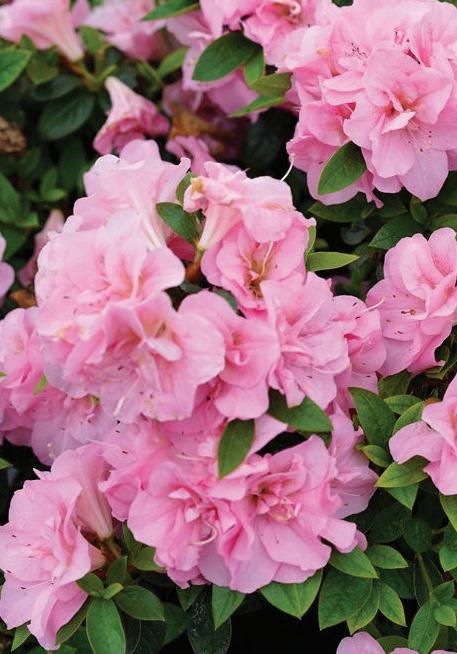
This evergreen or deciduous shrub produces funnel-shaped flowers in an array of colors in spring, with some reblooming in fall. Use hostas as an underplanting, or pair azaleas and hostas in a foundation planting or woodland setting. Hardy in zones 3-9, full sun to partial shade, 1-20’ tall
3. Barrenwort (Epimedium) Pink Champagne

Delicate four-petaled flowers emerge in early spring, followed by small heart- or lanceshaped leaves. The patterned or tinted foliage remains evergreen in milder climates. Mass as a ground cover in challenging deep shade sites as an understory plant alongside hostas. Hardy in zones 5-9, partial sun to shade, 8-12” tall, deer and rabbit resistant
4. Begonia (Begonia) Double Delight® Blush Rose

This versatile warm season annual occurs in a wide range of flower colors, leaf shapes and patterns. The neat mounding habit complements hostas, whether grown in containers, borders or mass plantings. Hardy in zones 9-11, partial sun to shade, 6-18” tall, deer and rabbit resistant
Valentine® Bleeding Heart
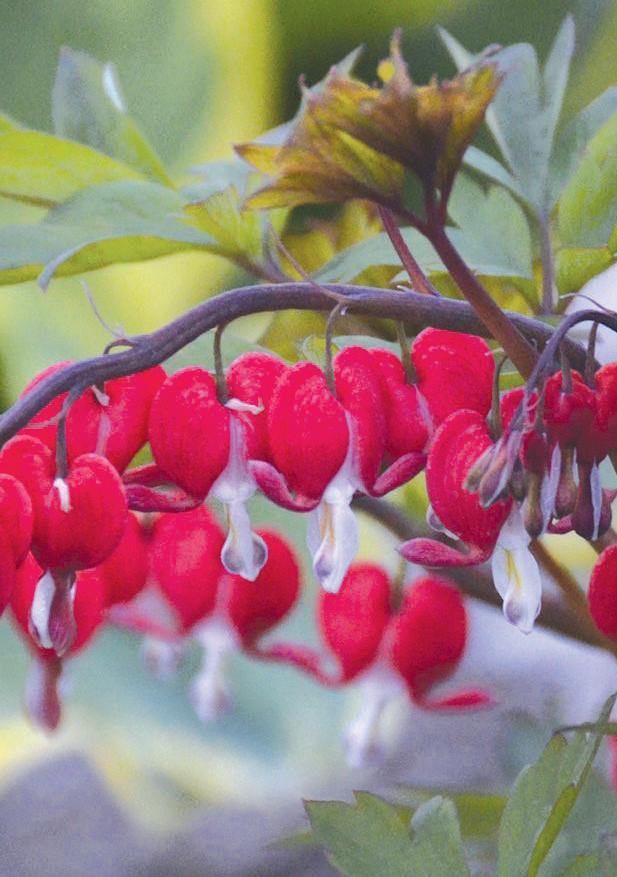
Charming heart-shaped flowers along arching stems in shades of pink, white or red, along with the lacy foliage of this spring bloomer provide delicate contrast to the bold leaves of hosta. Plant in a shade garden or container. Hardy in zones 3-9, partial shade, 2-3’ tall, deer resistant
The patterned or colored foliage of this mat-forming perennial is complemented by short flower spikes in late spring to early summer. Use this quickgrowing ground cover to fill in tough shady spots underneath trees, shrubs, hostas and other perennials. Hardy in zones 3-9, full sun to shade, 3-6” tall, deer and rabbit resistant

50 | UAC MAGAZINE URBAN AG
5. Bleeding Heart (Lamprocapnos, syn. Dicentra)
6. Bugleweed (Ajuga) Chocolate Chip Bugleweed
7. Caladium (Caladium) Heart to Heart® ‘Blushing Bride’
Add an exotic tropical look to shady areas with the large heartshaped leaves of caladium that come in a wide array of patterns and colors. Pair this heat lover with hostas in a shade border, foundation planting or massed in the landscape. Hardy in zones 9-11, partial to full shade, 12-24” tall, deer and rabbit resistant

8. Clematis (Clematis) Sparky® Blue Clematis

One of the most versatile perennial vines, clematis blooms from spring to fall, depending on the variety, with an array of flower colors and forms. Grow along a fence, trellis or arbor, in the ground or containers. Hardy in zones 3-10, full sun to partial shade, 2-50’ tall, deer and rabbit resistant
9. Coleus (Coleus, syn. Plectranthus, Solenostemon)
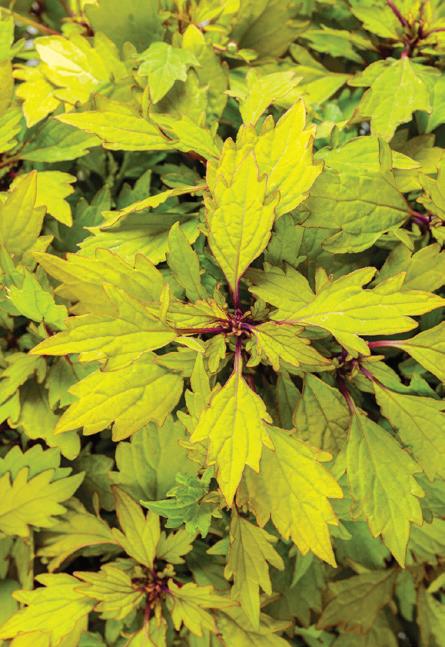
ColorBlaze® Royale Pineapple Brandy™
Grown for the colorful foliage, this warm season annual occurs in an endless range of patterns, hues and leaf shapes. Plants can be upright, mounding or trailing. Combine with hostas in containers, shady borders or mass plantings. Hardy in zones 10-11, partial sun to shade, 6-26” tall, deer resistant
10. Coral Bells (Heuchera)

Dolce® ‘Silver Gumdrop’ Coral Bells
Coral bells are grown primarily for the foliage, which occurs in an array of colors, patterns and shapes. Tolerant of a wide range of growing conditions, coral bells and hostas can be combined in a mixed shade border, woodland setting or containers. Hardy in zones 3-9, partial sun to shade, 8-12” tall, deer resistant
11. Daylily (Hemerocallis)
Rainbow Rhythm® ‘Ruby Spider’ Daylily
One of the most popular summer blooming perennials, the trumpet-shaped flowers of daylilies occur in a wide range of colors and patterns, along with grass-like foliage. Plant in a site that gets at least 4-6 hours of direct morning sun. Hardy in zones 3-9, full sun to partial shade, 1-6’ tall

12. Dogwood (Cornus)
Golden Shadows® Pagoda
Dogwood
This deciduous tree or shrub offers four-season appeal, with showy white or pink flowers in spring. Green or variegated foliage comes in varying shapes, some with fall color. Use for contrast in a woodland border or foundation planting. Hardy in zones 2-9, full sun to shade, 3-25’ tall, deer and rabbit resistant

13. Ferns (Various genus)
‘Ghost’ Fern
Hostas and ferns pair exceptionally well together, with ferns providing lush contrast with deeply dissected patterned or green leaves. Use this moisture lover in challenging deep shade areas and near water features. Hardy in zones 3-11 depending on the variety, partial sun to full shade, 2”-65’ tall

14. Foamflower (Tiarella) ‘Cutting Edge’
Frothy white or pink flowers appear in spring, complemented by attractive green or patterned leaves in varying shapes. Foliage stays evergreen in milder regions. Plant underneath trees or shrubs, or mass as a ground cover in shady or woodland borders. Hardy in zones 4-9, partial sun to shade, 8-12” tall, deer and rabbit resistant

SUMMER 2023 | 51 URBAN AG
15. Hydrangea (Hydrangea)
Little Quick Fire® Panicle
Hydrangea
This popular deciduous shrub comes in a range of sizes and forms, producing large showy flowers from summer into fall, depending on the variety. Use hostas as an understory plant to hydrangeas, or combine in a mixed border. Hardy in zones 3-9 depending on the variety, full sun to partial shade, 3-15’ tall
16. Japanese Hakone Grass (Hakonechloa)
‘All Gold’
One of the few ornamental grasses to thrive in shade, the strappy gold or variegated foliage adds bright color to darker areas. The graceful arching habit and fine texture contrasts beautifully with hostas. Mass as a ground cover or plant in a border. Hardy in zones 5-9, partial sun to shade, 1-2’ tall, deer and rabbit resistant
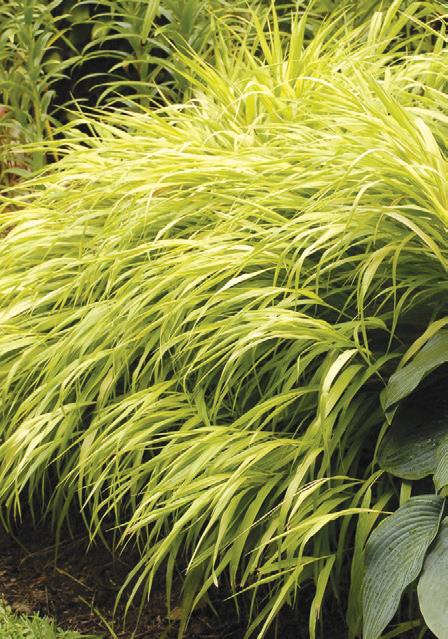
17. Leopard Plant (Ligularia)
‘Bottle Rocket’
Leopard plant is one of many perennials that go with hostas. Large heart-shaped or rounded foliage lends drama and contrast. Tall yellow flower spikes in summer brighten up shady spots. Plant this moisture lover near a water feature or in a mixed border. Hardy in zones 4-9, partial sun to shade, 2-4’ tall, deer and rabbit resistant

18. Lungwort (Pulmonaria)
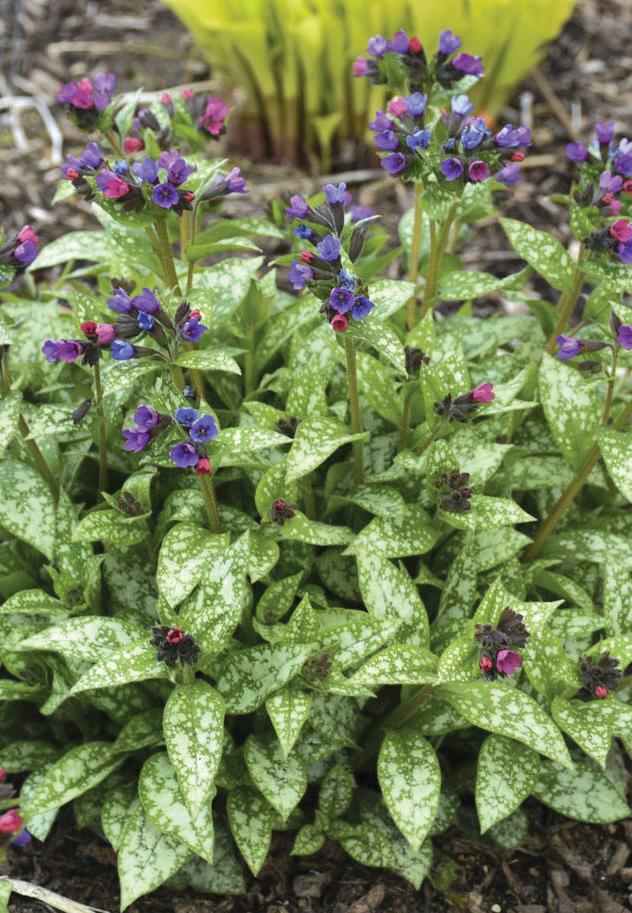
‘Spot
On’ Lungwort
Bell-shaped flowers occur in early to mid spring in shades of blue, pink, red or white. The lance-shaped deciduous foliage can be green, silver, white or spotted. Pair this moisture lover with hosta in a woodland border, mass planting or containers.
Hardy in zones 3-9, partial to full shade, 6-12” tall, deer and rabbit resistant
19. Siberian
Bugloss (Brunnera)
‘Queen of Hearts’
Clusters of tiny blue flowers that resemble forget-me-nots bloom in spring above heart-shaped foliage in colors of green, gold, silver or white. Use to brighten up deeply shaded areas. Plant in a woodland border, as edging or in mass plantings. Hardy in zones 3-8, full sun to partial shade, 1-2’ tall, deer and rabbit resistant
20. Spotted Deadnettle (Lamium)
Proven Accents® Pink
Chablis® Dead Nettle

This hardy perennial ground cover is grown for the green, gold or variegated heart-shaped leaves and tubular flowers in colors of white, pink or lavender. Tolerant of a wide range of growing conditions, this vigorous grower can be planted underneath hostas, shrubs or shade trees. Hardy in zones 3-8, full sun to partial shade, 6-8” tall, deer and rabbit resistant
FAQs
What grows well next to hostas?
Choose a diversity of natives, woodland plants and low-maintenance varieties. For multi-seasonal interest, add flowers that pair well with hostas that bloom at different times of the year. Include plants with attributes such as fall color and attractive bark.
Can you plant hostas and hydrangeas together?

As an underplanting, hostas help soften the bare lower stems of hydrangeas, and will thrive in the deeper shade cast by the taller shrubs. Both prefer a slightly acidic, wellamended soil.
What shrubs go with hostas?
Shrubs that thrive in growing conditions similar to hostas include azalea, camellia, daphne, fothergilla, hydrangea, mountain laurel (Kalmia), pieris, rhododendron, spirea, sweetshrub (Calycanthus), sweet spire (Itea) and viburnum.

52 | UAC MAGAZINE URBAN AG
Learn more at provenwinners.com/learn
LET’S
Rebloomer | Easy Care | Large Blooms
TRIALED. TESTED. PROVEN .

This unique hydrangea hybrid has proved it really CAN DO anything! First, it sets its flower buds along the entire length of its stems, not just at the tips like conventional rebloomers. So if it’s cut back or damaged by cold, those lower old wood buds will still develop into flowers. Plus, it reblooms faster, providing continuous displays of star-like double flowers through frost, even in USDA zone 4.
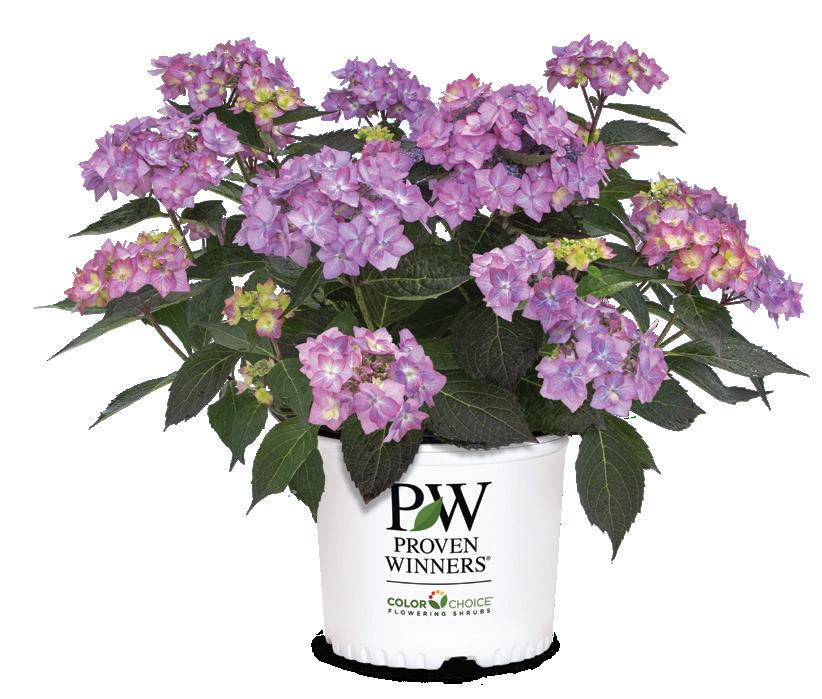


SUMMER 2023 | 53
SUMMER FALL USDA 4-9 3-4’ tall + 3’ wide
DANCE CAN DO! ®
Hydrangea macrophylla × serrata ‘SMNHSI’ PP#32,548; CBRAF
SCAN TO LEARN MORE
Available from Proven Winner s ® ColorChoice® growers www.provenwinners-shrubs.com AVAILABLE FROM THESE SUPPLIERS Andersson Gardens Avondale Estates, GA • 404-641-9061 Hahira Nursery Inc Hahira, GA • 800-893-9430 Scottsdale Farms Alpharetta, GA • 770-777-5875 Twin Branch Nursery Woodstock, GA • 770-926-8566
Turf areas reimagined
Picking your pockets for a large front yard
by Norman Winter, Horticulturist, Author and Speaker
We moved to our present house in Spring 2019. Ideas flowed like a waterfall for backyard plantings, while the front yard was daunting, for one big reason: it is over a half-acre with a steep upward slope toward the home. The first objective was to reduce turf area by clustering trees in islands, or pockets. This eliminated turf care here and opened up a sea of opportunity for dogwoods, Bloom-a-Thon and Perfecto Mundo azaleas, hydrangeas, Double Play flowering quince, Yin and Yang viburnums and my prized Fluffy gold conifers.
The islands have sunny hot sides and shadier cooler sides. The sunny side of the islands opened the door to plants like Pugster Blue buddleia and Luscious Royale Cosmo lantanas. Then I added more perennials like Color Coded Price is White and Frankly Scarlet coneflowers, as well as Pyromania Blaze red hot pokers. Behind these I have been able to incorporate Rockin salvias. With such a large forested front yard it has at times left me wondering if guests could find the front door. While
I exaggerate slightly, here and at several of my other homes over the years you quickly realize this is the most important area to have a pocket of welcoming color. Here I have created a little dazzle with Luscious Royale Cosmo lantana, Angelface Super White angelonia and Sunstar Pentas. There are also four self-watering AquaPots that have more of the gorgeous colored conifers like Fluffy and Polar Gold arborvitaes. While the Christmas-tree look of the arborvitae are picturesque on their own, the addition of Superbells Grape Punch, Tangerine Punch and Black Currant Punch have added the holy wow. The perfect finishing touch to the containers however was the addition of Dolce Appletini heucheras. So many gardeners still don’t understand the effectiveness of heucheras as partners in containers.
The last addition, and perhaps unexpected for a front door pocket planting, was a glazed blue bird bath. The shiny blue partnered with red and white AquaPots is a little added magic. I still spend most of my time out back and then it hits me. I know where my hummingbirds and butterflies are: they are playing in the front yard!
About the author
Norman Winter is an author and speaker on horticultural topics. Follow him on Facebook for more photos and garden inspiration: Norman Winter The Garden Guy
The colorful pocket planting by the front door include Sunstar Pentas, Angelface Super White angelonias along with selfwatering AquaPots filled with golden conifers, Superbells Punch varieties and Dolce Appletini heuchera. The glazed blue bird bath gives an unexpected dash of shiny color.
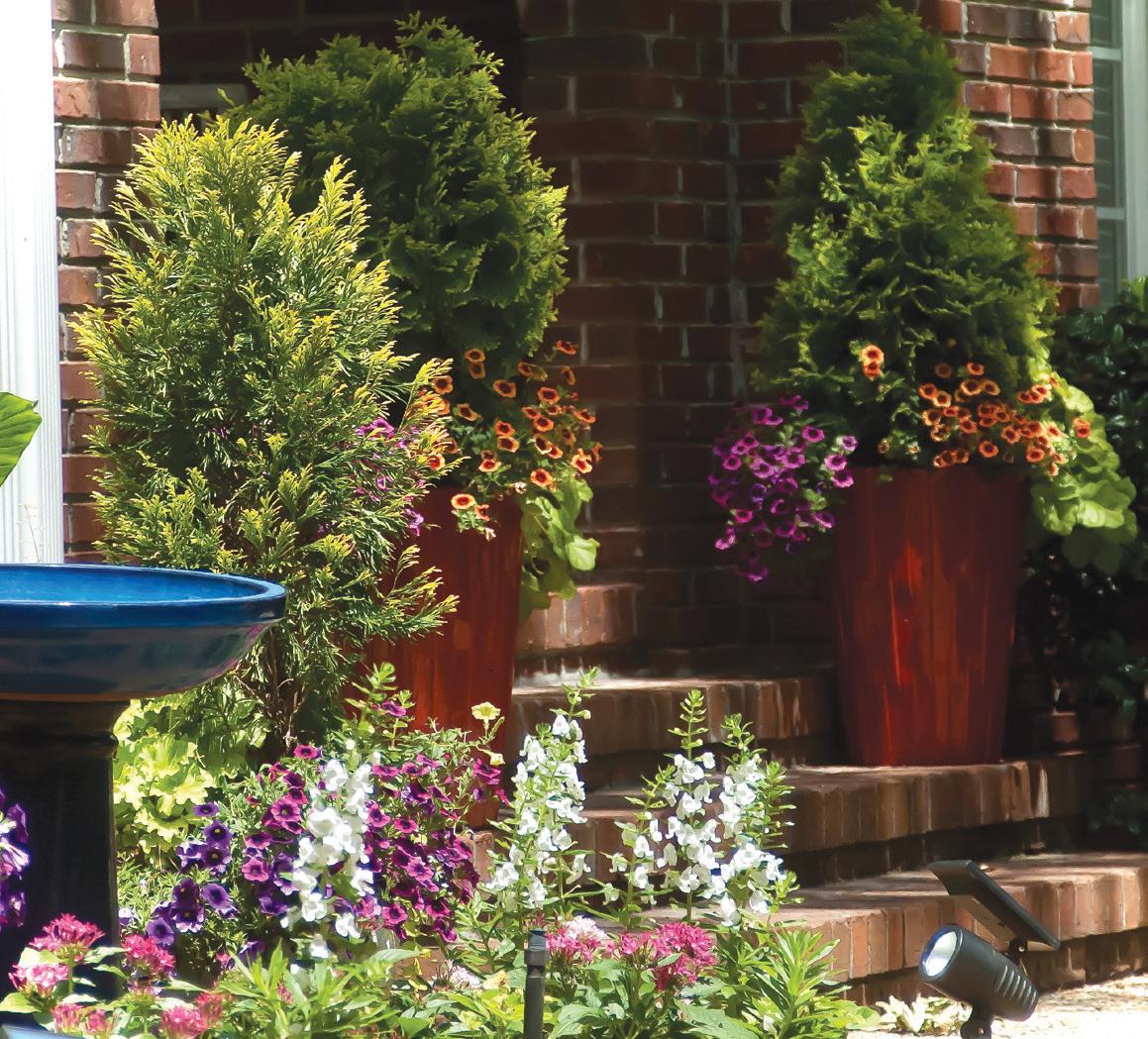
The sunny perimeters of the pockets allowed for color like these ColorCoded, Price is White and Frankly Scarlet coneflowers.

In this pocket with sunny afternoons, the new ColorBlaze Wicked Hot coleus and golden Fluffy arborvitae create a stunning contrast.
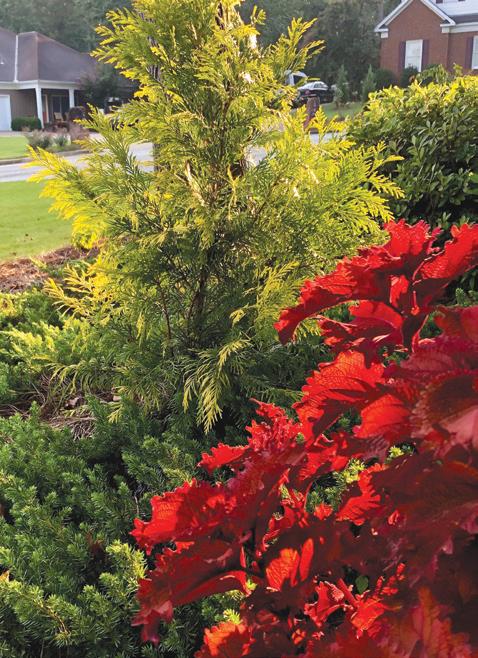
54 | UAC MAGAZINE URBAN AG



























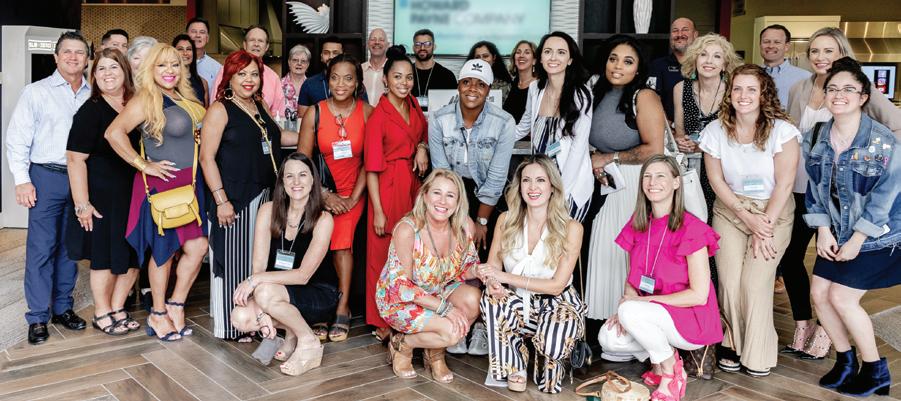







SUMMER 2023 | 55 MY SPACE | MY STYLE | MY VISION MARCH/APRIL 2023 ATLANTAHOMEIMPROVEMENT.COM Grown-Up Treehouse Check out Buckhead’s famous treehouse (bonus: you can spend the night!) p. 20 Growing Au Naturel How to transform your yard into something bio-beautiful p. 33 Meet Atlanta’s Backyard Bosses Get inspired by these exterior spaces crafted by local experts. p. 23 4 Presented by Guest-Ready Bathroom Renos p. 41 Presented by 001_COVER 0323-SEUD.indd 2/28/23 10:56 AM Connect with our 50,000+ local digital database! 1/21/22, 2:29 PM Atlanta Best Media Mail Meet Atlanta's op 10 Outdoor Living Experts https://mail.google.com/mail/u/0/?ik=e5720a5d31&view=pt&search=all&permmsgid=msg-f%3A1742607125414016983&simpl=msg-f%3A1742607125414016983 Dona Halliday <dhalliday@atlantabestmedia.com> Meet Atlanta's Top 10 Outdoor Living Experts My Home Improvement Magazine <assistant@atlantabestmedia.com> ue, Aug 30, 2022 at 1:14 PM Reply-To: assistant@atlantabestmedia.com o: dhalliday@atlantabestmedia.com Follow us on Social Proud to be an Urban Ag Council member EVENTS PRINT & DIGITAL Sign up for your free Find a Pro Directory Listing at AtlantaHomeImprovement.com For more than 20 years our Atlanta Home Improvement Community has served 5000+ businesses connecting contractors and service providers with thousands of homeowners. INDUSTRY EVENT PHOTOS INCLUDE KITCHEN & BATH INFLUENCER TOUR AND DESIGN CONTEST WINNERS Print • Digital • SEO • Email • Social Media • Events • PR October 26 | 9:00 am - 1:00 pm | Blalock Lakes, 4075 New Corinth Road , Newnan GA 30263 Register as a team or an individual! Sponsorships available: urbanagcouncil.com Blast your troubles away | Win prizes | Eat BBQ
Planting for pollinators
2023 Georgia Pollinator Plants of the Year
by Laurel Clark
With so many options available, it can be challenging to know what plants to use that will look beautiful and also help the environment. The State Botanical Garden of Georgia at the University of Georgia is helping by selecting four Georgia Pollinator Plants of the Year.
The program, a collaboration between the State Botanical Garden, UGA Extension and green industry partners, began in 2020. The program annually promotes four top-performing landscape plants that support pollinators. Plants are chosen for the following categories: spring bloomer, summer bloomer, fall bloomer and Georgia native.
The pollinator plant of the year program was designed to encourage the use of high-impact plants that support pollinators in private and commercial gardens. It is funded in part by the Vaughn-Jordan Foundation.
“Our audience has been very receptive to the program,” said Heather Alley, the garden’s conservation horticulturist. “These plants always sell beautifully at our plant sales. One of our partner growers has enjoyed highlighting these plants, and their customers are excited about them.”
Alley said all the plants selected this year complement each other with cool, blue undertones. They are also easy to maintain.
The plants are nominated by gardeners, horticulturists, entomologists, ecologists and green industry professionals throughout Georgia and selected by a committee. The committee announces the plants a year in advance to give growers time to increase the stock of the plants for the public.
Spring bloomer
Blue wild indigo - Baptisia australis
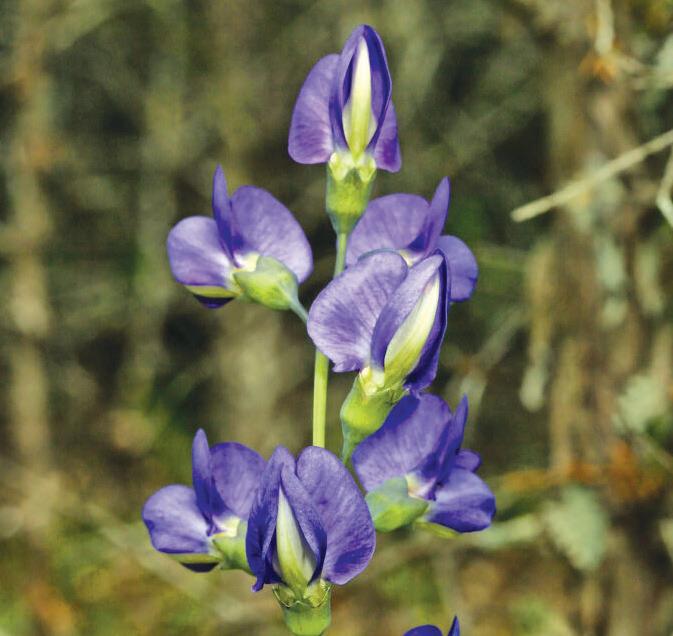
About: Blue wild indigo is a 4-foot-tall perennial wildflower in the pea family. In spring, this plant has tall spikes of eye-catching cobalt blue flowers.
Conservation value: Supports many native bees and other pollinators.
Summer bloomer
Wild bergamot - Monarda fistulosa
About: Wild bergamot is a perennial in the mint family that grows 4 to 5 feet tall, with long-lasting white, lavender or magenta summer blooms that attract many different pollinators.
Conservation value: Supports many native bees, hummingbirds and butterflies.
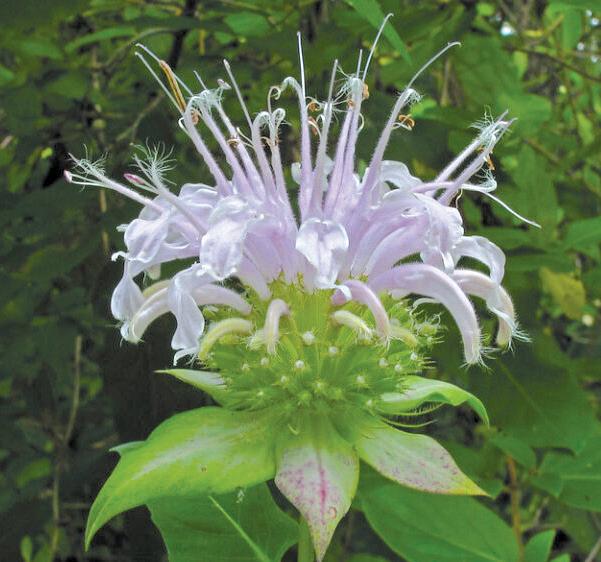
56 | UAC MAGAZINE
URBAN AG
Becky Griffin is the community and school garden coordinator for UGA Extension and serves on the pollinator plants of the year committee. She is also the coordinator of the Great Southeast Pollinator Census, a citizen science project created by UGA designed for everyone to participate and make a difference in pollinator conservation.
Griffin said serving on the committee and talking about the nominated plants is a great way to get pollinator plants to the public. She also helps market the pollinator plants to people who want to start pollinator gardens and encourages those who wish to participate in the pollinator census to plant them in their home gardens.
“Planting plants that attract pollinators is a conservation action that we can all do,” said Griffin. “Research has shown that if you build the habitat, they will come. Planting pollinator plants directly impacts our pollinators, which are important for our food crops in Georgia.”
~ Becky Griffin
Griffin said you can add the pollinator plants of the year to your space, whether that’s a farm, subdivision or apartment complex.
Although new plants are selected each year, Alley said the goal is to continue promoting all the pollinator plants of the year selections over time. All the plants can work together for a beautiful collection of pollinator favorites that can be added to yearly.
The State Botanical Garden, a unit of UGA Public Service and Outreach, sells the pollinator plants of the year at its spring and fall plant sales and in the garden’s gift shop, and works with growers and retailers in Georgia to produce and market the plants.
Learn more
For more information about the pollinator plants of the year program and a directory of native plant nurseries, visit https://t.uga.edu/649
For more information about the Great Southeast Pollinator Census, visit https://gsepc.org/.
Fall bloomer
Aromatic aster - Symphyotrichum oblongifolium
About: Aromatic aster is a perennial wildflower in the sunflower family that grows 3 to 4 feet tall with purple flowers in the fall.

Conservation value: Supports many native bees, butterflies, hover flies and wasps.
Georgia native
Coastal plain Joe Pye weed - Eutrochium dubium
About: Coastal plain Joe Pye weed is a perennial wildflower in the sunflower family that grows 3 to 5 feet tall with profuse but tiny mauve flowers that bloom from July through September.
Conservation value: Supports bumble bees, small bees, hummingbirds and butterflies.
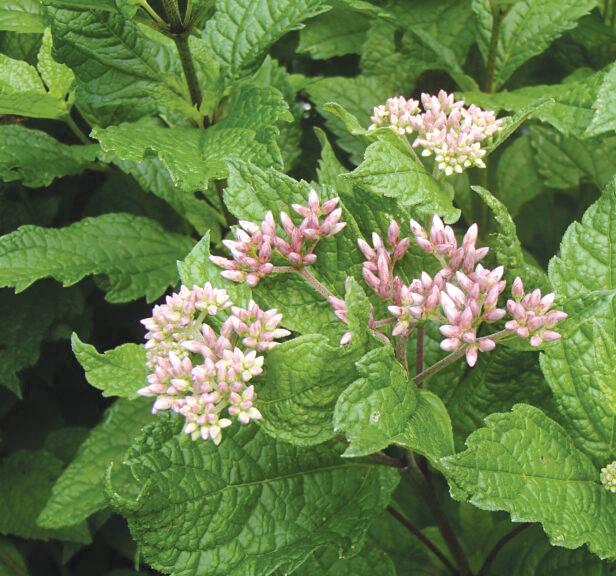
SUMMER 2023 | 57
URBAN AG


58 | Directory of advertisers WORKERS COMP INSURANCE EMPLOYEE BENEFITS PROPERTY AUTO Company/Website: ................. Page # Atlanta Best Media 55 atlantabestmedia.com Frank A Smith Nurseries 45 fasnurseries.com GA Certified Landscape Professional ....... 34 ugaurbanag.com/certification Greene County Fertilizer Company .......... 23 greenecountyfert.com Howard Brothers ................................... 31 howardbrothers.com LandCare .............................................. 27 landcare.com Legacy Turf Farms .................................. 59 legacyturffarms.com NG Turf ................................................... 3 ngturf.com Power Equipment Distributors ................ 2 powereqp.com Progressive Turf Equipment .................... 19 progressiveturfequip.com Proven Winners ..................................... 53 provenwinners-shrubs.com SiteOne ................................................ 15 siteone.com Snellings Walters ................................... 35 snellingswalters.com Sod Solutions ........................................ 47 sodsolutions.com Sumter Sod 21 sumtersod.com Sunbelt Turf 29 sunbeltturffarms.com Super-Sod ............................................. 60 supersod.com

SUMMER 2023 | 59
Cold Hardiness for the Northern Transition Zone
Tolerance Improved Over Other Bermudas
to Varied Soils & Climates
Faster
Bermudas
Tolerance to Heal Fast from
&
Traffic
Density for Golf Courses & Sports Fields Lower Water Usage Real Drought Resistance Like This, But in a Bermudagrass Tahoma31 Bermudagrass was developed by the turfgrass experts at Oklahoma State University ® INTRODUCING Reserve your order today! LegacyTurfFarms.com 770-607-0491 850 Indian Mounds Rd SE, Cartersville, GA 30120
Exceptional
Shade
Adaptable
Early Spring Green-Up
Than Other
Wear
Divots
Foot
Pro-Level
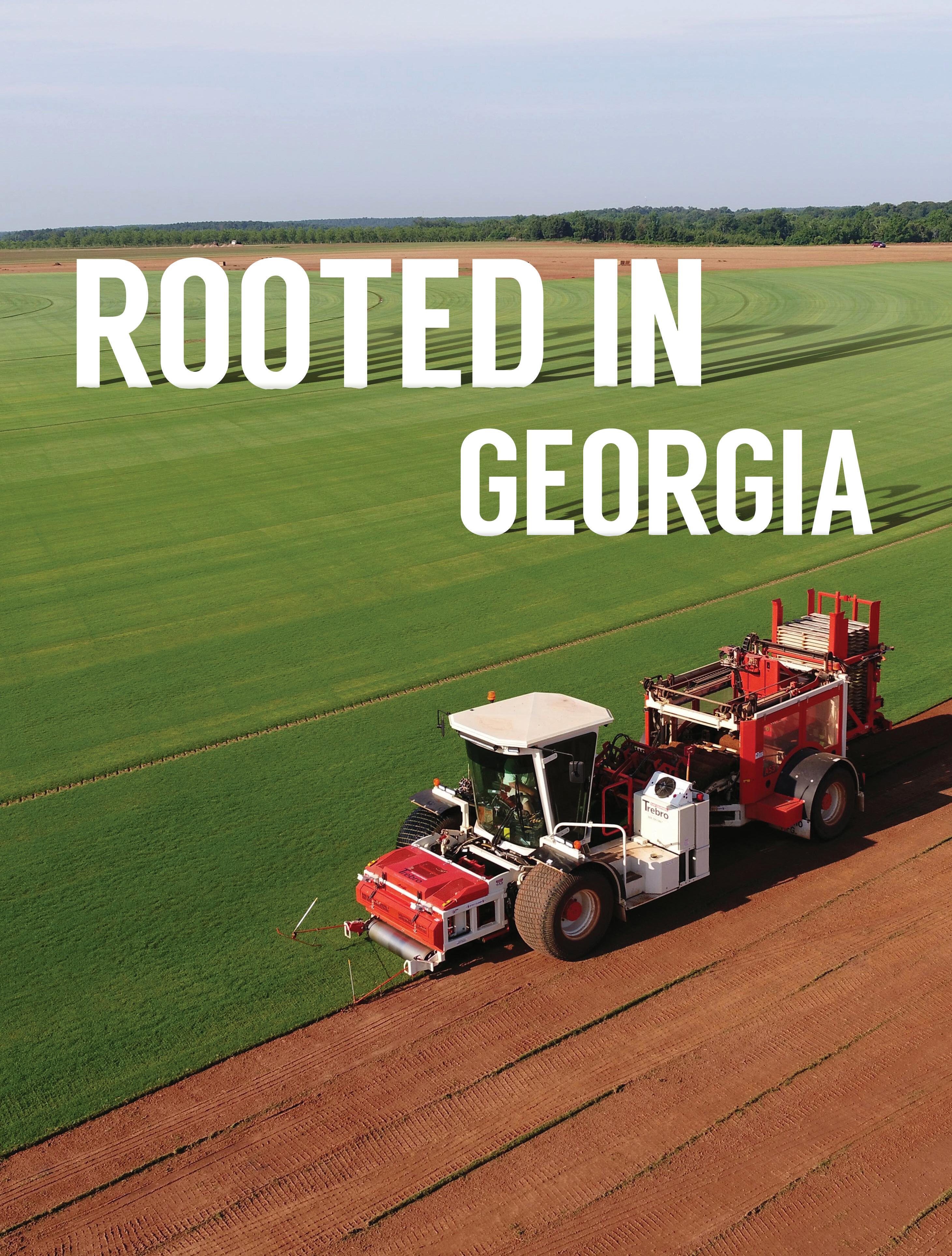

CARTERSVILLE 770-382-7284 ALPHARETTA 770-274-2262 FOREST PARK 404-363-1932 CANTON 888-360-1125 FT. VALLEY 478-987-0776 LAWRENCEVILLE 770-277-7745 MARIETTA 770-516-3255 NEWNAN 888-360-1125 WHOLESALE.SUPERSOD.COM • Get wholesale pricing • Choose pickup or delivery dates • Request expedited delivery • View your purchase history SIGN UP NOW FOR YOUR
























































































 by Erin Saunders, Leica Geosystems
by Erin Saunders, Leica Geosystems



 by Peter Thelen Sr., CPA, FMC, President of Thelen Financial
by Peter Thelen Sr., CPA, FMC, President of Thelen Financial


 by Brian Sulka, Professional EOS Implementer®at EOS Worldwide
by Brian Sulka, Professional EOS Implementer®at EOS Worldwide







 by Kristen Hampshire for Lawn & Landscape magazine
by Kristen Hampshire for Lawn & Landscape magazine

 by Bryan Tolar, Tolar Capitol Partners
by Bryan Tolar, Tolar Capitol Partners



































































































